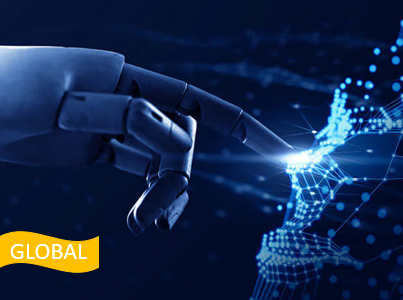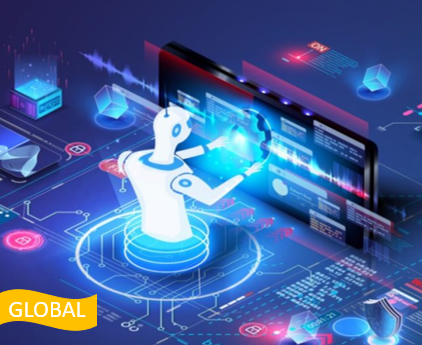Our latest selection of the best AI articles for everybody
Updated every Tuesday and Thursday
-
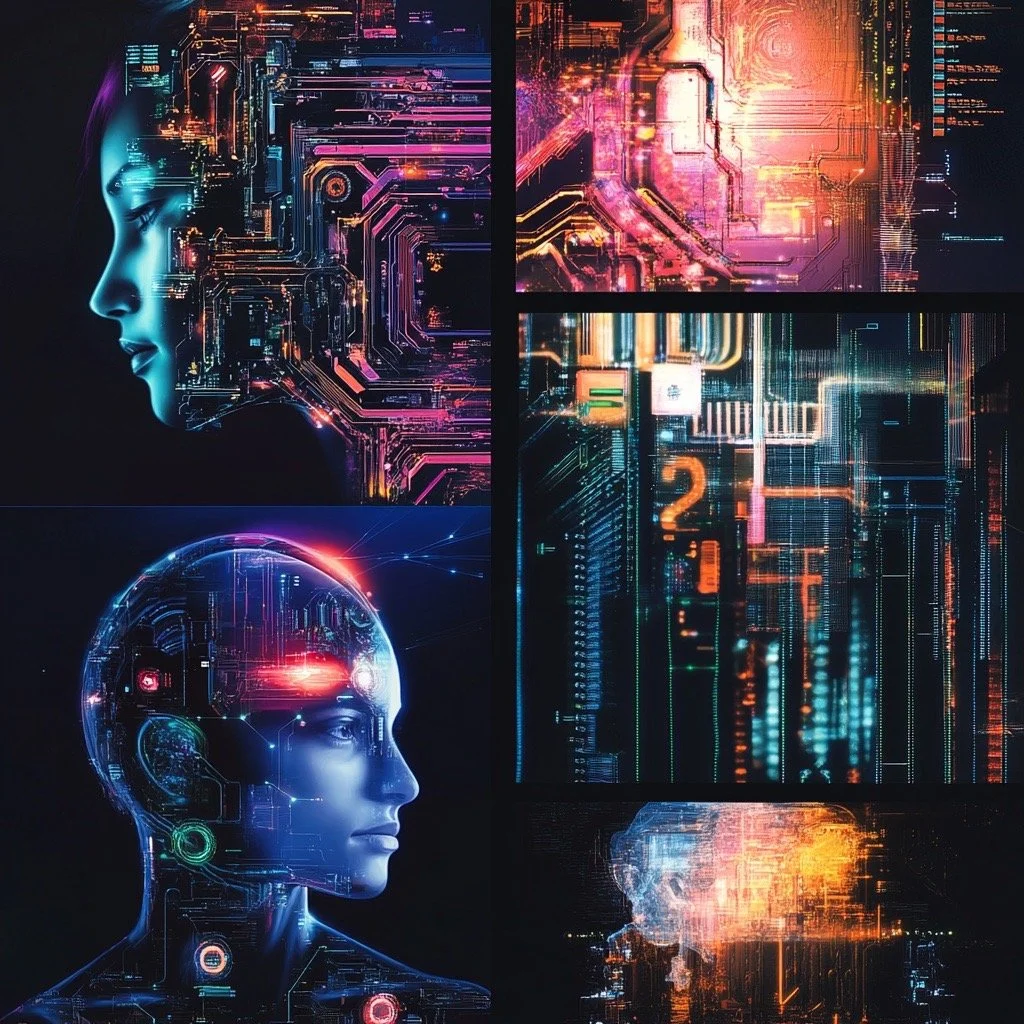
8 Types of AI You Should Know About in 2025
The article "8 Types of AI You Should Know About in 2025" by Kacper Rafalski explores the distinct categories of artificial intelligence and their real-world applications. It covers Narrow AI, Generative AI, Predictive AI, Reactive Machines, Limited Memory AI, Computer Vision, NLP, and Expert Systems—explaining how each functions, where they're used, and their limitations. From self-driving cars to medical diagnostics and content creation, each AI type brings unique strengths and challenges. The article also highlights ethical concerns like bias and IP issues and stresses the importance of choosing the right AI type for business needs and responsible use.
Kacper Rafalski - 16 April 2025 - Article in English
-
-
-

How AI Is Transforming the Real Estate Landscape
The article introduces salzburg_ai, an innovative proptech solution that enables communities to efficiently share energy, reducing the need for storage. By providing real-time insights into both individual and community energy consumption, it enhances household energy management and supports sustainable practices. The broader context emphasizes how AI and GenAI are transforming the real estate industry—improving accessibility, convenience, and user experience for property managers, agents, buyers, renters, and investors. The piece is part of Netguru’s ongoing exploration of how advanced technologies like AI are reshaping industries, with a focus on practical solutions and business optimization
Kamil Rogiński - 1 April 2025 - Article in English
-
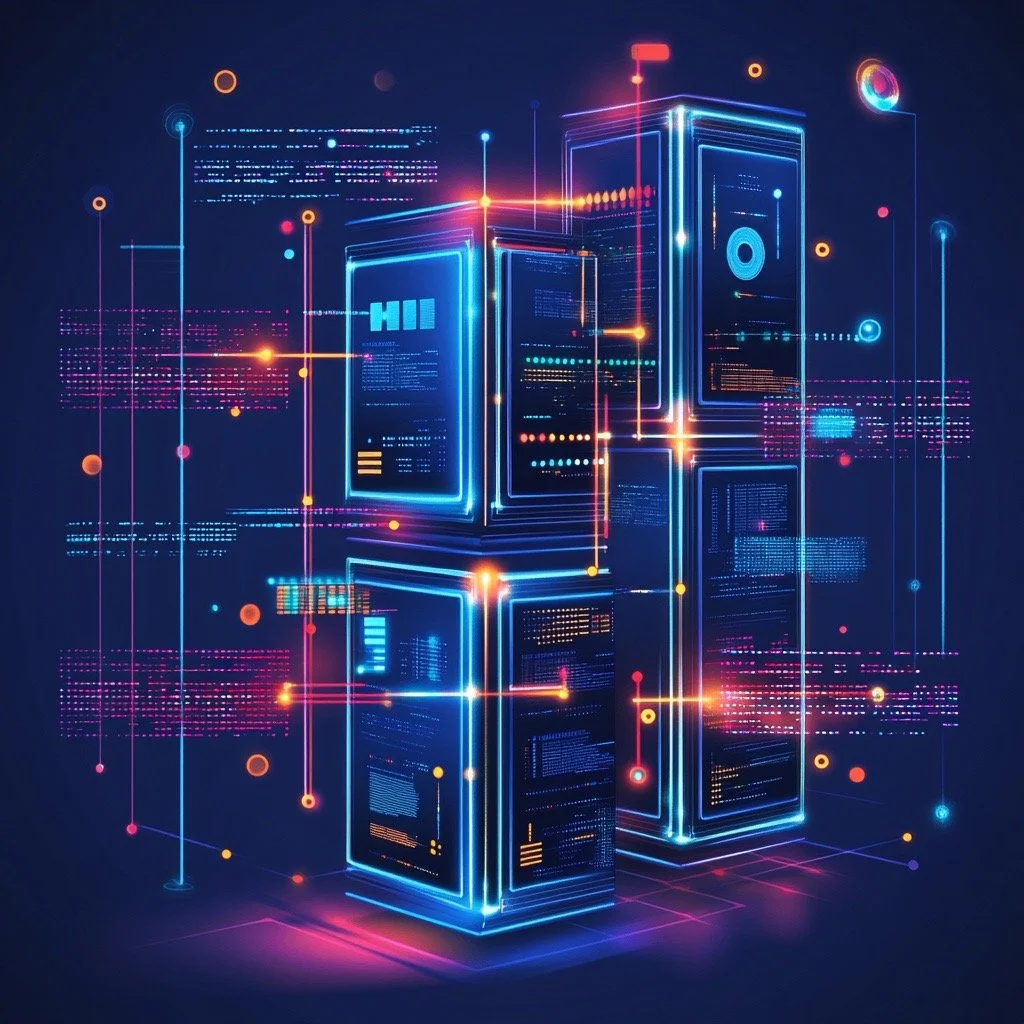
Why AI-Driven Data Modernization Is Your Competitive Edge
The article highlights how AI-driven data modernization gives businesses a competitive edge by transforming outdated, siloed data systems into real-time, integrated intelligence hubs. It explains how AI enables faster, smarter decisions, enhances data security and resilience, and boosts operational efficiency while improving employee satisfaction. Through automation and predictive insights, companies can proactively respond to market shifts and protect data integrity. The article argues that investing in AI-powered data modernization is no longer optional — it's essential for staying ahead in today’s digital economy.
Rhett Power - 30 April 2025 - Article in English
-

Machine Learning vs. Deep Learning vs. MLOps Jobs: Which Path Should You Choose?
This article compares three key AI career paths: Machine Learning (ML), Deep Learning (DL), and MLOps. It defines each field, outlines core skills, responsibilities, and salary ranges, and provides real-world examples. ML focuses on traditional algorithms and structured data; DL uses neural networks for complex tasks like image and language processing; MLOps ensures scalable, automated deployment of models. The guide helps readers choose a path based on interests—whether in algorithm design, neural networks, or production pipelines—and offers tips on building skills, portfolios, and staying competitive in a fast-growing job market.
Machine learning jobs - 17 April 2025 - Article in English
-

Vertex AI and Gemini: how to create artificial intelligence apps in a few clicks
This article introduces Vertex AI, Google Cloud’s unified platform for building, training, and deploying machine learning and generative AI models. Designed for developers, data scientists, and non-technical teams, it offers no-code tools, access to powerful models like Gemini, and a vast Model Garden of over 160 models. Vertex AI supports all stages of the AI lifecycle, from AutoML and MLOps to real-time deployment, and enables the creation of AI agents with the Agent Builder—all without writing code. With flexible pricing and real-world success stories, Vertex AI makes cutting-edge AI accessible to everyone
Cryptonomist - 27 March 2025 - Article in English
-

AI in Human Capital Management (HCM): The What, Why and How
This article explores how artificial intelligence (AI) is transforming Human Capital Management (HCM) by automating routine HR tasks, enhancing personalization, and delivering real-time insights. It highlights key AI applications across the employee lifecycle—talent attraction, recruitment, onboarding, development, retention, and separation. The article outlines five essential use-cases: talent acquisition, HR service delivery, personalization, performance management, and analytics. It also offers guidance on evaluating and implementing AI-powered HCM solutions, emphasizing data integrity, change management, and trust in AI-driven decisions to improve workforce productivity and business outcomes.
Spiceworks Community - 25 March 2025 - Article in English
-

Machine Learning’s Expanding Role in Environmental Health Research
This article explores how machine learning (ML) is transforming environmental health research by helping scientists understand complex, changing factors like air and water quality, pollution, and climate impacts. ML enables faster, more accurate analysis of diverse data sources—from wearables to satellites—making it easier to track exposures, predict health risks, and inform policy. Applications include forecasting air pollution, detecting water contamination, monitoring biodiversity, and improving waste management. While ML holds great promise, the article also stresses the importance of ethical use, data quality, and transparency to ensure fair and effective outcomes.
Ankit Singh - 26 March 2025 - Article in English
-

AI & Machine Learning in Database Management: Studying Trends and Applications with Nithin Gadicharla
This article explores how AI and Machine Learning are transforming database management through the experience of expert DBA Nithin Gadicharla. It highlights how AI-driven tools automate performance tuning, query optimization, anomaly detection, and predictive maintenance, reducing manual intervention and improving efficiency. Nithin leverages features like Azure SQL's Intelligent Query Processing and SQL Server Machine Learning Services to enhance database reliability and scalability. The article also addresses the integration of AI with traditional methods like indexing and partitioning, while ensuring data security and compliance. It presents a vision of self-optimizing, intelligent database systems.
Carl Williams - 21 March 2025 - Article in English
-

How Reinforcement Learning is Shaping Generative AI Models
This article explores how reinforcement learning (RL) is transforming generative AI models. It explains how generative models like GANs, VAEs, diffusion, and autoregressive models create realistic content, and how integrating RL enhances their control, personalization, and alignment with user goals. RL helps models learn from feedback, adapt to new domains, and produce interactive, optimized outputs. Applications include personalized content, drug discovery, digital twins, and education. While challenges like reward design, safety, and sample efficiency remain, the future promises more responsive and collaborative AI systems that empower creative and scientific innovation.
World Business Outlook - 21 March 2025 - Article in English
-

Neural network learns to hesitate for improved accuracy
Researchers from Skoltech and the Russian Academy of Sciences have developed a method that improves neural networks' ability to assess their confidence in predictions, enhancing reliability in high-risk areas like medicine and manufacturing. Presented at WACV-2025, the approach uses "soft" labels (values between 0 and 1) to reflect expert confidence, helping models handle uncertainty better. It distinguishes between epistemic (data-related) and aleatory (noise-related) uncertainty. The method enables neural networks to recognize when human verification is needed, reducing overconfidence and improving safety in critical applications.
Oleg Sherbakov - 25 March 2025 - Article in English
-

Face Value: How AI Measures Charisma and Uniqueness
Doctoral student Xiaohang (Flora) Feng at Carnegie Mellon’s Tepper School of Business researches how AI quantifies charisma and uniqueness. Her study on celebrity visual potential (CVP) used machine learning to analyze facial features, finding traits like large eyes and strong sexual dimorphism correlate with higher charisma. Another study on Airbnb listings found that moderate visual uniqueness boosts demand, but extreme uniqueness reduces it. These models help businesses optimize marketing, product listings, and influencer selection. Her work transforms subjective traits into measurable, actionable data for marketing and consumer research.
John Miller - 3 March 2025 - Article in English
-

How to Make an AI Model: A Step-by-Step Guide for Beginners
This article provides a step-by-step guide to building an AI model, making the process accessible for beginners. It covers key concepts, including AI fundamentals, machine learning types, and data collection. The article details essential steps like selecting tools, training models, optimizing algorithms, and deploying AI systems. It explores neural networks, deep learning techniques, and specialized AI applications such as natural language processing, computer vision, and speech recognition. Additionally, it discusses evaluation methods, maintenance best practices, ethical considerations, and future AI trends, highlighting resources to help developers learn and improve their AI models.
Kacper Rafalski - 12 March 2025 - Article in English
-

Leveraging Machine Learning Algorithms to Combat Fraud in Supply Chain Operations
This article explores how machine learning algorithms can combat fraud in supply chain operations by detecting invoice manipulation, data falsification, and technological breaches. It highlights the effectiveness of supervised and unsupervised learning, anomaly detection, and predictive modeling in identifying fraudulent activities. Advanced techniques, such as XGBoost, enhance fraud prevention strategies, leading to cost savings and operational efficiency. Despite challenges like data quality and computational demands, integrating machine learning into supply chain processes strengthens business resilience and stakeholder trust while improving fraud detection capabilities.
Ting Huang - 13 March 2025 - Article in English
-

AI Has Agency Now. What This Means for Work (And Workers)
This article explores the rise of agentic AI, autonomous AI systems that operate without human prompts, executing tasks independently. Unlike traditional AI assistants, these AI agents proactively reshape work structures, automating workflows across industries like marketing, customer support, and sales. While businesses see increased efficiency and ROI, concerns about ethics, security, and workforce displacement remain. Experts argue that AI should enhance human capabilities, not replace them. Companies must implement governance frameworks, ensuring transparency, accountability, and ethical AI deployment to balance automation with human oversight effectively.
Sidharth Yadav - 28 february 2025 - Article in English
-
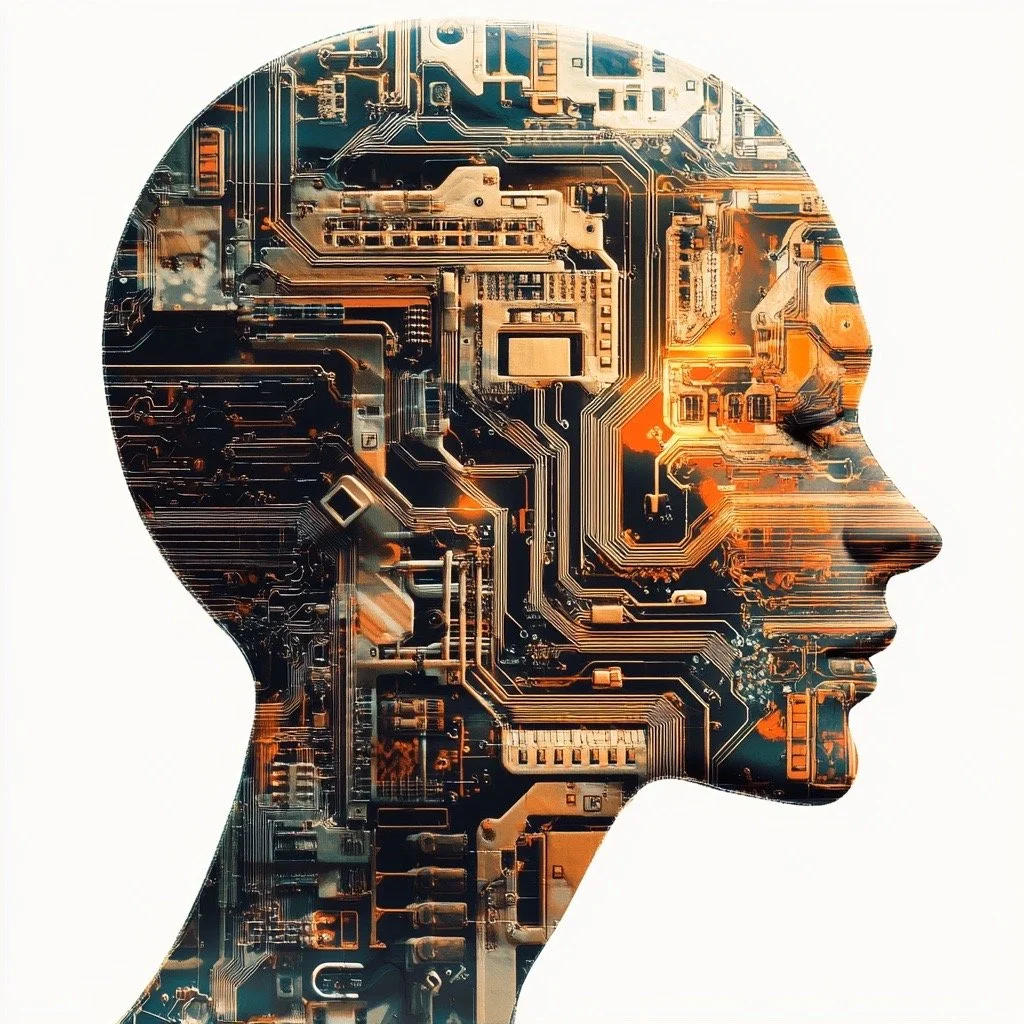
10 machine learning mistakes and how to avoid them
This article discusses ten common machine learning mistakes and how to avoid them. It highlights key issues such as AI hallucinations, model bias, poor data quality, legal and ethical risks, overfitting and underfitting, legacy system integration, performance and scalability challenges, lack of transparency, insufficient domain knowledge, and a shortage of machine learning skills. Experts provide insights on strategies to mitigate these risks, including using retrieval-augmented generation (RAG), improving data governance, implementing explainability techniques, and fostering collaboration between technical and business teams to enhance machine learning project success.
Bob Violino - 24 February 2025 - Article in English
-

Using AI to Capture Industrial Expertise
The article explores the role of AI in preserving industrial expertise as experienced workers retire, leading to a significant loss of operational knowledge in manufacturing. Bryan DeBois from RoviSys highlights the declining tenure and retention rates in the sector, emphasizing AI’s potential to capture and scale human expertise. It distinguishes between traditional AI (for prediction), autonomous AI (which can make decisions and optimize processes), and generative AI (used for natural language processing but unsuitable for critical plant operations due to hallucinations). Experts advocate for machine teaching and deep reinforcement learning to automate complex decision-making and enhance production efficiency. The article warns against the premature use of generative AI in industrial settings, citing potential safety risks.
Jack Smith - 6 March 2025 - Article in English
-

Can artificial intelligence prevent the next financial crisis?
This article explores the role of AI in predicting and preventing financial crises. It highlights AI’s success in crisis prevention across industries like healthcare and transportation, yet notes its limitations in economic forecasting. AI-driven models, including machine learning and deep learning, analyze vast financial data to detect early warning signs and assess systemic risks. However, challenges like data quality, model interpretability, and regulatory concerns hinder AI’s full effectiveness. While AI improves risk management and stress testing, it cannot yet fully prevent financial crises, though ongoing research aims to enhance its predictive capabilities.
Cointelegraph - 14 february 2025 - Article in English
-

Two Years of Generative AI: How Has Customer Experience Delivery Changed?
This article explores how generative AI has transformed customer experience delivery over the past two years. It highlights key changes, including AI-powered chatbots that provide more relevant, multilingual, and multi-modal responses, hyper-personalization that tailors content at an individual level, and AI-enhanced visual marketing, such as text-to-video technology and virtual try-ons. It also discusses the role of generative AI in fostering brand loyalty and the risks associated with its use, such as potential errors, biases, and data privacy concerns. The article emphasizes the need for human oversight and transparency in AI-driven marketing to maintain accuracy and consumer trust.
Atul Jindal - 13 February 2025 - Article in English
-

Meeting the Moment in Artificial Intelligence
This article highlights Dartmouth's efforts to integrate AI into education and research through grants, workshops, and innovative applications. Faculty are using AI in classrooms, such as AI tutors for language courses and AI-assisted research in environmental studies. A new grant program supports faculty incorporating generative AI into teaching. Researchers are also leveraging AI for healthcare advancements, including MoodCapture, an app detecting depression, and AI Patient Actor, which helps medical students. Dartmouth continues its legacy in AI, focusing on education, research, and innovation while addressing AI's limitations, such as bias and misinformation.
Harini Barath - 13 February 2025 - Article in English
-

Unlocking the Data Revolution: Why Data Scientists Are the New Superheroes of Business
The article likely explores why dentists still use gold for dental restorations despite modern alternatives like ceramic and composite materials. Gold teeth have been used for centuries due to their durability, biocompatibility, and resistance to corrosion. Unlike other materials, gold doesn't break or wear down easily, making it ideal for crowns and fillings, especially for molars that endure significant pressure. Additionally, gold restorations require minimal removal of natural tooth structure, preserving oral health. While less common today due to aesthetic preferences and high costs, gold remains a preferred choice for some patients and dentists, especially for its longevity and functionality.
Clara Vang - 7 February 2025 - Article in English
-

The AI paradox: How tomorrow’s cutting-edge tools can become dangerous cyber threats (and what to do to prepare)
The article explores the cybersecurity risks of agentic AI, a new form of AI that operates autonomously with minimal human oversight. While agentic AI enhances efficiency in industries like business intelligence and healthcare, it also introduces serious security threats, including data breaches, AI hallucinations, and data poisoning. The article highlights the importance of cybersecurity measures, such as limiting AI privileges, restricting sensitive data access, and monitoring AI behavior. As AI rapidly evolves, businesses must adapt their security strategies to mitigate potential risks while leveraging AI’s benefits.
Zac Amos - 2 February 2025 - Article in English
-

Why is AI in everything these days? What you need to know about the world’s favorite buzzword
AI is everywhere, from phones to toothbrushes, but its definition is often stretched for marketing. While AI-powered features can enhance products—like Netflix recommendations, self-driving cars, and smart assistants—companies frequently use "AI" as a buzzword to sell more. AI isn't one thing; it ranges from simple automation to deep learning and large language models like ChatGPT. Consumers should look beyond the label to see if AI genuinely adds value or is just hype. Misleading marketing can create unrealistic expectations or fears, making it crucial to stay informed about AI's real benefits, risks, and impact on daily life.
Becca Caddy - 12 February 2025 - Article in English
-

Generative AI versus Predictive AI
This article compares Generative AI and Predictive AI, two key branches of machine learning with distinct goals and applications. Generative AI focuses on creating new, realistic data, utilizing models like GANs and VAEs for tasks such as content creation and drug discovery. Predictive AI, on the other hand, forecasts outcomes based on historical data, leveraging techniques like RNNs, BERT, and GPT-3 for tasks like sentiment analysis and demand forecasting. The article highlights their unique strengths, synergies, and advancements, emphasizing their significance in fields like healthcare, business intelligence, and creative industries, while exploring their foundational research and real-world implications.
Sana Hassa - 20 January 2025 - Article in English
-

Generative AI in Healthcare : 10 applications and use cases reshaping the industry
This article explores the transformative impact of Generative AI in healthcare, highlighting its role in diagnostics, personalized treatments, and operational efficiency. It covers key applications, including medical imaging analysis, drug discovery, predictive analytics, and automation of administrative tasks. The market for Generative AI in healthcare is projected to surpass $21 billion by 2032, driven by increasing adoption. Real-world examples from PathAI, Zebra Medical Vision, and NVIDIA showcase its effectiveness. The article also addresses challenges like AI transparency and regulatory concerns, proposing solutions for responsible AI integration in healthcare.
Chirag Bharadwaj - 27 January 2025 - Article in English
-

Superagency in the workplace: Empowering people to unlock AI’s full potential
This article explores the transformative potential of AI in the workplace, comparing its impact to historic innovations like the steam engine. While 92% of companies plan to increase AI investments, only 1% consider themselves ""mature"" in AI deployment. The key challenge lies not in employee readiness, as they are eager to adopt AI, but in leadership's ability to steer bold and strategic implementations. The report highlights the need for leaders to align strategies, address safety and transparency concerns, invest in employee training, and embrace ambitious goals to unlock AI's full potential. It emphasizes that AI maturity requires visionary leadership to transform businesses and deliver real economic value.
Hannah Mayer - 28 January 2025 - Article in English
-

A breakthrough in cataract surgery in Cuba with the use of AI
The article highlights a breakthrough in cataract surgery in Cuba through the use of artificial intelligence (AI) to improve the precision of intraocular lens (IOL) calculations, reducing the risk of refractive errors. A multidisciplinary team from the Ramón Pando Ferrer Institute of Ophthalmology and the University of Havana developed AI-based neural networks trained with data from over 15,000 surgeries. This innovation has significantly enhanced the accuracy of IOL predictions, potentially reducing refractive surprises to less than 5%. While promising, the article notes that these technologies are costly and currently limited to Havana, emphasizing the need for cautious optimism in adopting AI in medicine.
ICarlos Alberto González - 9 January 2025 - Article in English
-
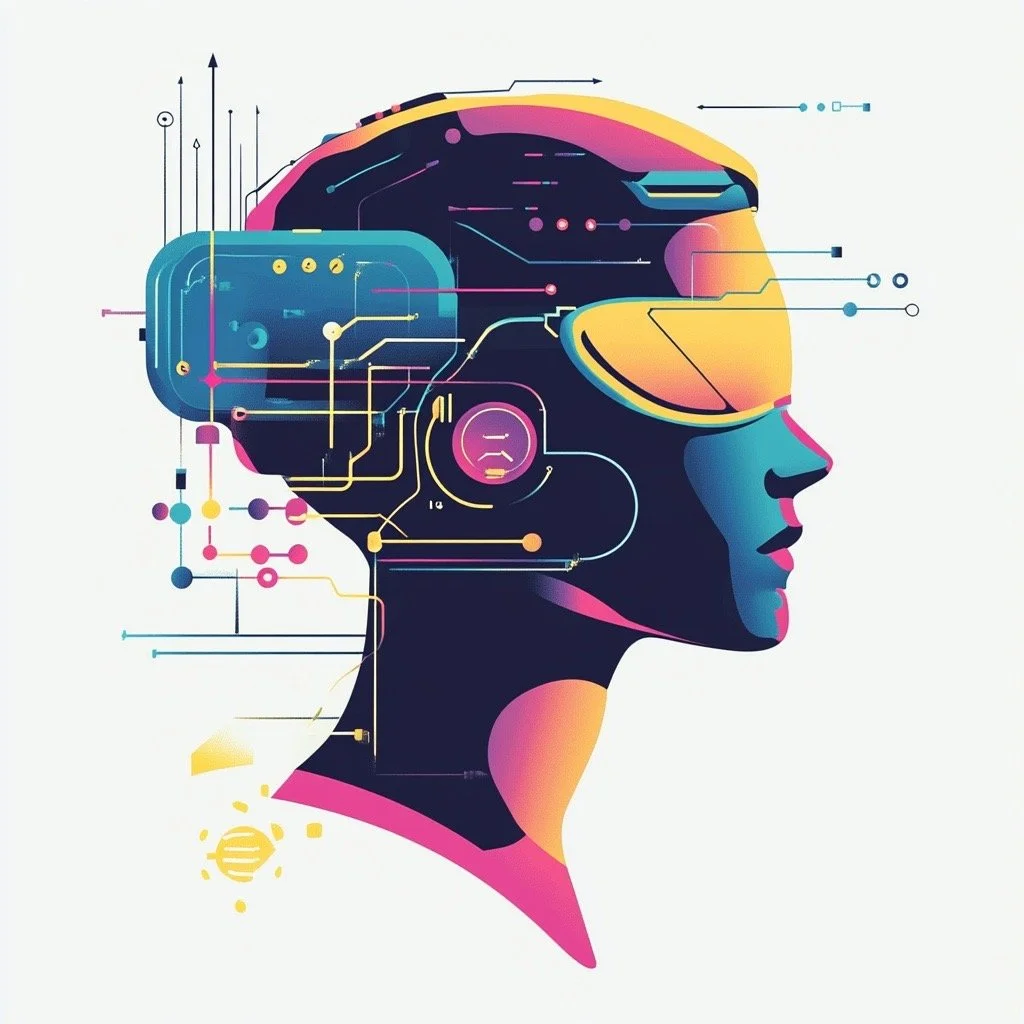
Top Machine Learning Frameworks and Tools to Master in 2025
The article highlights the importance of mastering machine learning (ML) tools and frameworks to stay competitive in the rapidly evolving AI landscape. It reviews top ML tools like Microsoft Azure, IBM Watson, TensorFlow, PyTorch, and Scikit-learn, detailing their key features and applications in industries like healthcare, finance, and customer service. The article emphasizes choosing the right tool based on objectives, data characteristics, scalability, and ease of use. It underscores the transformative potential of AI and ML in business operations and encourages acquiring data science and ML skills, with certifications and free courses as starting points for career growth in this domain.
Asad seo - 8 January 2025 - Article in English
-

AI in Product Development - Benefits, Use Cases, Process, Costs & More
This article explores the transformative role of AI in product development, highlighting its growing adoption across industries. It delves into the benefits, such as boosting productivity, enhancing innovation, reducing costs, and improving product quality, while offering use cases like predictive maintenance, customer journey mapping, and personalized experiences. The article outlines the AI development lifecycle, from defining objectives to deploying models, and discusses the cost factors and ethical challenges like bias and data privacy. It concludes with future trends like XAI, IoT integration, and Edge AI, emphasizing AI’s potential to revolutionize product development workflows.
Chirag Bharadwaj - 22 January 2025 - Article in English
-

AI in the Automotive Industry: 7 Key Applications for a Competitive Advantage
This article explores the transformative impact of AI on the automotive industry, highlighting its benefits, challenges, and future potential. AI enhances efficiency, safety, and personalization across areas like manufacturing, vehicle maintenance, driver assistance, and insurance. It powers autonomous driving, predictive maintenance, and eco-driving, while optimizing shared mobility and fleet management. Challenges include ethical concerns, data security, workforce shifts, and regulatory gaps. With tools like simulation platforms and computer vision libraries, AI is shaping innovations like ADAS, fully autonomous vehicles, and predictive analytics, transforming automotive operations and customer experiences.
IOlya Kolomoets - 2 January 2025 - Article in English
-

Top Computer Vision Models: Comparing the Best CV Models
This article explores state-of-the-art (SOTA) computer vision (CV) models across tasks like image classification, object detection, and segmentation. Highlighting models such as CoCa, YOLOv7, and Panoptic SegFormer, it discusses their applications in industries like healthcare, manufacturing, and agriculture. The challenges of building CV models, including data quality, model complexity, ethical concerns, and scalability, are addressed. Encord, a data development platform, is presented as a solution for managing, curating, and annotating datasets, offering tools to streamline training and enhance scalability for real-world CV applications.
Haziqa Sajid - 10 January 2025 - Article in English
-

Machine learning algorithm enables faster, more accurate predictions on small tabular data sets
The article introduces TabPFN, a transformer-based foundation model designed for small-to-medium tabular datasets (up to 10,000 samples). TabPFN leverages in-context learning and synthetic data generation to outperform traditional models like gradient-boosted decision trees on classification and regression tasks. It provides rapid predictions in seconds and supports fine-tuning, density estimation, and generative abilities. TabPFN uses a two-way attention mechanism tailored for tabular data and addresses challenges like missing values, feature heterogeneity, and uninformative features. The model demonstrates strong generalization, scalability, and potential for advancing tabular data analysis across various scientific domains.
Albert Ludwigs University of Freiburg - 9 January 2025 - Article in English
-
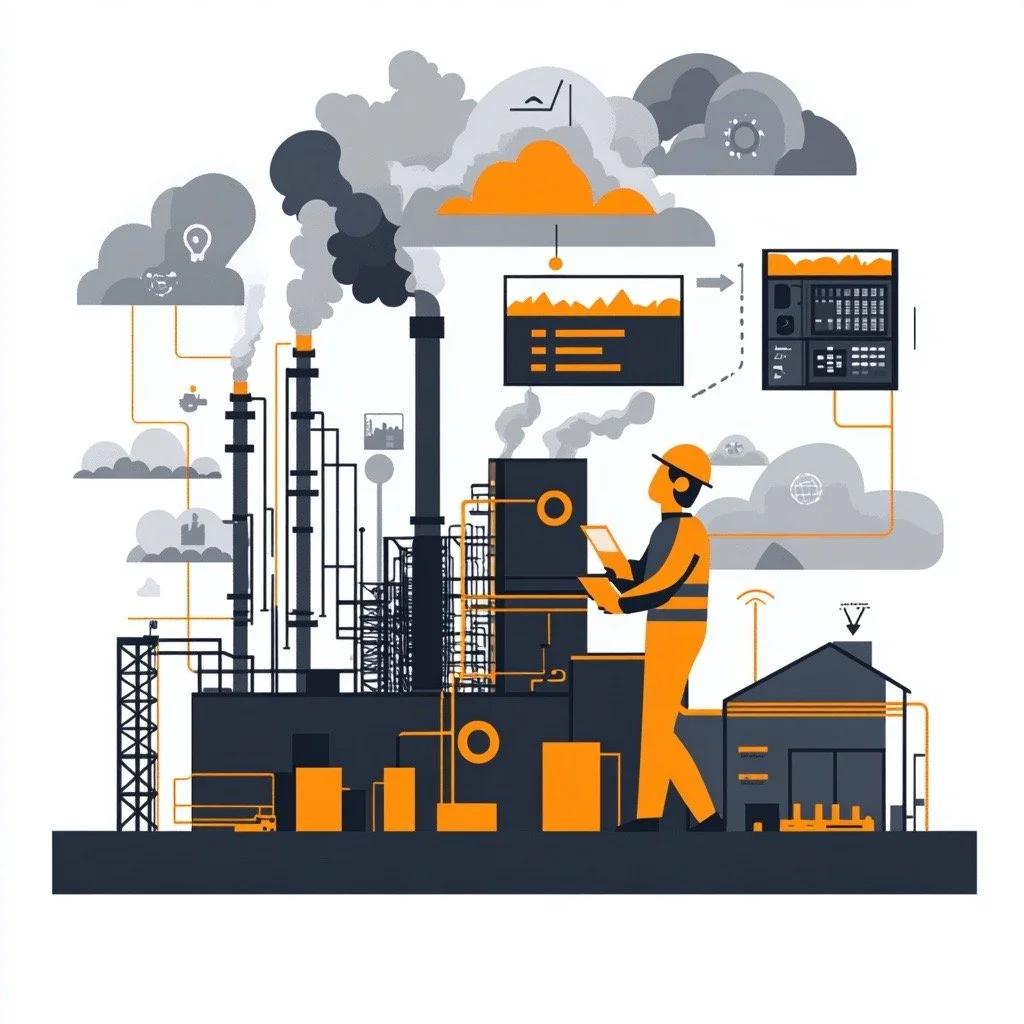
12 Augmented Analytics Examples and Use Cases Across Industries
This article explores augmented analytics, a transformative technology that combines AI and machine learning to automate data analysis and decision-making across industries. By simplifying complex processes, it enables businesses to uncover trends, improve operations, and stay competitive, regardless of users' technical expertise. The article highlights 12 real-world use cases, such as optimizing healthcare resource allocation, enhancing marketing strategies, improving supply chain efficiency, and personalizing customer experiences in travel and retail. Augmented analytics is reshaping industries by delivering actionable insights, streamlining reporting, and driving smarter, data-driven decisions.
Ievgen Krasovytskyi - 26 December 2024 - Article in English
-

Top 10 Analytics and Business Intelligence Trends For 2025
In this article we will see, that the business intelligence (BI) trends for 2025 are dominated by the rapid evolution of AI, data security, and sustainability. AI-driven BI solutions will focus on upscaled insights and anomaly detection, enhancing decision-making. At the same time, data security will remain a priority due to increasing regulatory requirements and cybersecurity risks, prompting companies to adopt Zero Trust models. Synthetic data will also gain prominence for training AI models while ensuring privacy compliance. Finally, data collaboration and embedded analytics will further transform business operations, enabling organizations to make more informed decisions in real-time.
RIB Software - 23 December 2024 - Article in English
-

A new computational model can predict antibody structures more accurately
MIT researchers have developed AbMap, a computational model that predicts antibody structures and binding strength with improved accuracy. By adapting large language models and focusing on hypervariable regions, the model overcomes limitations in traditional protein-structure prediction techniques. AbMap analyzes millions of antibody variants to identify the most effective candidates, enabling faster, cost-efficient drug development. Tested on SARS-CoV-2 spike proteins, the model achieved an 82% success rate in identifying high-binding antibodies. This approach also enhances antibody repertoire analysis, helping explain immune response differences among individuals and aiding research on diseases like HIV and COVID-19.
Anne Trafton - 2 January 2025 - Article in English
-
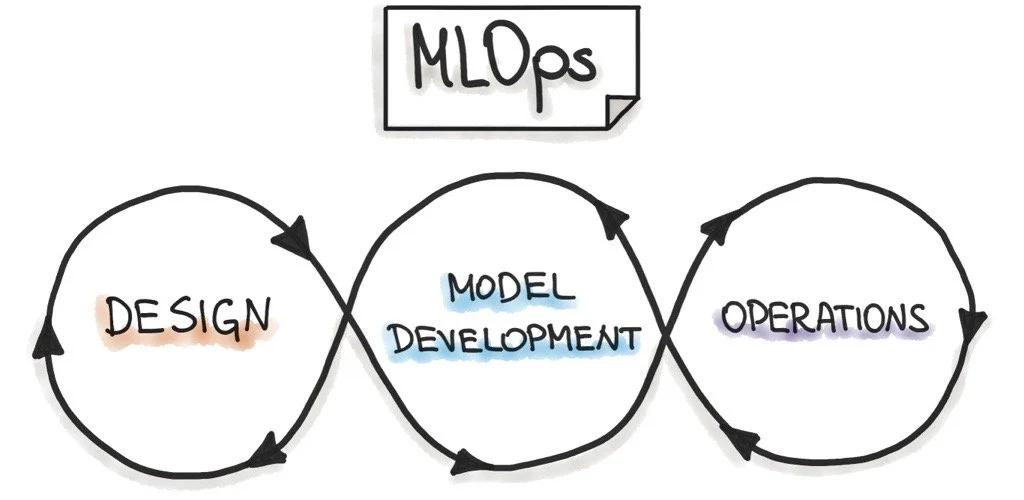
Best Free MLOps Platforms in 2025
The article discusses the rise of MLOps platforms as essential tools for managing machine learning (ML) workflows. It highlights their role in automating processes like model training, deployment, and monitoring, boosting efficiency and scalability. Key features to consider include model management, data processing, and integration capabilities. Leading free platforms like MLflow, Kubeflow, and DVC offer robust solutions backed by active user communities. However, challenges such as technical barriers, team collaboration issues, and data security remain. Future trends include AI-powered automation and low-code platforms, with adoption expected to surpass 80% by 2025 as businesses increasingly integrate MLOps into their AI strategies.
BestFREE.nl - 9 December 2024 - Article in English
-

Emerging Manufacturing Trends: Shaping the Future of Technology
The article explores emerging trends in manufacturing technology, focusing on automation advancements in CNC machining, 3D printing, and robotics. CNC machining, enhanced by IIoT and AI, offers precision and efficiency, while 3D printing enables mass customization, sustainability, and complex designs. Large-scale 3D metal printing supports on-site fabrication, reducing costs and delays for industries like aerospace and energy. Automation, powered by robotics, AI, and digital twins, revolutionizes smart factories with seamless integration, boosting productivity and quality control. These interconnected technologies are shaping a smarter, more sustainable future for manufacturing.
baker industries - 20 December 2024 - Article in English
-

AI in the Construction Industry: How the AI Revolution Will Influence What We Build and How We Build It
The article explores the transformative impact of artificial intelligence (AI) on the construction industry, highlighting advancements in design, planning, and execution. AI tools like generative design and predictive analytics optimize resource management, reduce costs, and improve safety by predicting challenges and analyzing real-time data through drones and sensors. Key trends include sustainability, digital twins, and robotics, enabling eco-friendly practices and enhancing efficiency. The integration of AI is also creating new job opportunities in fields like data analysis, robotics, and sustainability consulting, shaping a smarter, safer, and more innovative construction landscape.
CAPITOLOGY BLOG - 20 December 2024 - Article in English
-

Revolutionizing product management with AI: Exploring innovation, machine learning, and ethical practices across the product lifecycle
The article explores how AI transforms product management by enhancing innovation, efficiency, and market relevance. It details AI’s role in the product lifecycle, from ideation and market research to design, development, and deployment. AI-powered tools enable predictive analysis, data-driven insights, and customer engagement optimization. Key roles in AI product management include platform development, research, and responsible AI oversight, emphasizing ethics, transparency, reliability, and privacy. The piece highlights AI’s impact on traditional marketing and product strategy while addressing challenges like bias and evolving technologies. Future research aims to improve AI’s transparency, integration with IoT and blockchain, and long-term business value creation.
John Lee - 3 December 2024 - Article in English
-

Tom Griffiths is decoding intelligence — both human and artificial — to think differently about how we think
The article profiles Tom Griffiths, a Princeton professor bridging psychology and computer science. He explores how humans, despite cognitive biases, remain a model for AI development. As director of Princeton's AI Lab, he fosters interdisciplinary AI research, applying psychological insights to improve AI and vice versa. Griffiths' interest in cognition began with early coding experiences in online games. His research focuses on how humans efficiently use cognitive resources, contrasting AI's data-heavy methods. He emphasizes learning from human problem-solving strategies to build smarter, more efficient AI. His work highlights the mutual enrichment of studying human and artificial intelligence, reshaping our understanding of cognition and decision-making.
Sean C. Downey - 5 December 2024 - Article in English
-

How Data Analytics Transforms Complex Information into a Stronger Business Strategy
Data analytics transforms complex information into actionable business strategies by turning vast data streams into valuable insights. Businesses use analytics to move from intuition-based decisions to evidence-driven strategies, gaining a competitive edge. Descriptive, predictive, prescriptive, and diagnostic analytics offer unique insights, driving informed decisions. Data collection, visualization, and AI-powered tools like machine learning enhance efficiency and accuracy. Use cases include predictive maintenance in manufacturing, personalized marketing in e-commerce, and fraud detection in finance. Comparative studies show that companies leveraging analytics, like Walmart, outperform those that don't. Embracing data analytics fosters innovation, customer engagement, and operational excellence.
Team IndiaIT360 - 2 December 2024 - Article in English
-
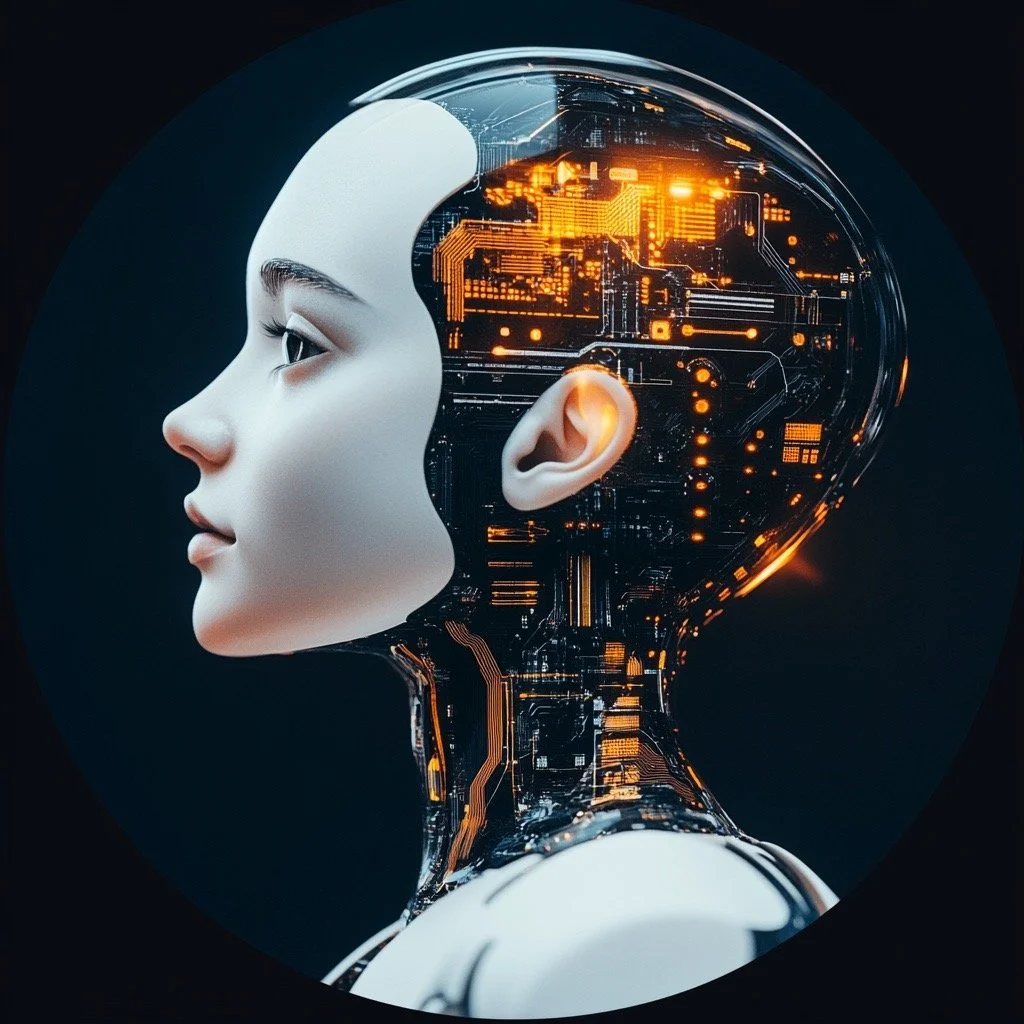
Achieving Excellence Through Trusted AI and Machine Learning Algorithms and Services
The article explores how Artificial Intelligence (AI) and Machine Learning (ML) are transforming industries by enhancing decision-making, efficiency, customer experiences, and innovation. It defines AI's components, such as natural language processing and machine learning, and highlights their applications, including predictive analytics, automation, personalized recommendations, and fraud detection. The piece outlines key steps for AI implementation, emphasizing clear objectives, data readiness, pilot projects, and continuous optimization. It also underscores the importance of ethical practices, scalability, and cross-functional collaboration. Businesses adopting AI strategically can unlock efficiency, cost savings, and competitive advantage in today’s data-driven world.
BrainerHub Solutions - 19 November 2024 - Article in English
-

Assessing Cyber Risks in Construction with Machine Learning
The article explores a machine learning (ML) approach to assessing cyber risks in construction projects, addressing vulnerabilities such as ransomware, phishing, insider attacks, data breaches, and supply chain threats. Using Monte Carlo simulations and fault tree analysis, the researchers developed a dynamic tool with trained ML models, feature analysis, and an optimization algorithm for mitigating risks. While simpler models worked well for linear risks like insider attacks, complex risks such as data breaches required sophisticated models. The study demonstrated effective risk prediction and management but noted challenges in replicating real-world complexity. Future efforts aim to refine datasets and validate models with real-world data.
Nidhi Dhull - 26 November 2024 - Article in English
-

Monitoring ML systems in production. Which metrics should you track?
The article provides an overview of monitoring machine learning (ML) systems in production, emphasizing the importance of tracking various metrics to ensure system reliability, model quality, and business impact. It introduces a "monitoring pyramid" framework, addressing four layers: software health (e.g., latency, resource utilization), data quality (e.g., schema validation, missing data), model quality (e.g., accuracy, drift, fairness), and business KPIs (e.g., revenue, conversions). It explains specific metrics for each layer, challenges in implementation, and shares industry practices, highlighting the need for comprehensive ML monitoring to manage risks and maintain performance.
Emeli Dral - 27 November 2024 - Article in English
-

Types of AI with Examples
The article provides an overview of the different types of AI, organized by functionality and capabilities. Functionality-based types include Reactive Machines, which perform simple tasks without learning; Limited Memory AI, capable of learning from past data; Theory of Mind AI, which could understand emotions and human interactions; and Self-aware AI, which exists only in theory. Capability-based types are Artificial Narrow Intelligence for specific tasks, Artificial General Intelligence mimicking human reasoning, and Artificial Super Intelligence, potentially surpassing human intelligence. The piece highlights AI's transformative potential and ethical concerns, underscoring its impact on industries and society.
Jonathan Johnson - 11 November 2024 - Article in English
-

Real-World Use Cases of Generative AI in Manufacturing
The article explores the transformative role of generative AI (Gen AI) in manufacturing, highlighting its use in product design, supply chain optimization, digital twins, warehouse automation, quality inspection, worker safety, patent management, and customer interactions. Gen AI enhances efficiency, reduces costs, and boosts innovation by automating processes like defect detection, inventory management, and predictive maintenance. Despite its benefits, challenges such as data security, integration with legacy systems, computational costs, and initial investments persist. Tools like Encord help streamline AI implementation, offering scalable, secure solutions for data annotation and active learning in manufacturing workflows.
Encord - 12 November 2024 - Article in English
-

Discover Global Network: Future Payment Strategy Should Be Digital and Data-Driven
The article discusses Discover Global Network's future payment strategy, emphasizing the need for a digital and data-driven approach. Jennifer Cruz, SVP at Discover, highlights the importance of modernizing payment infrastructures to cater to diverse demographics, from Gen Z to Boomers. With growing consumer reliance on contactless and mobile payments, security and data privacy are paramount. AI and machine learning are critical for enhancing fraud detection, optimizing customer experiences, and ensuring robust cybersecurity measures. Discover aims to expand its international acceptance footprint while adapting to emerging payment trends and prioritizing collaboration with partners to streamline payment ecosystems.
PYMNTS - 20 November 2024 - Article in English
-
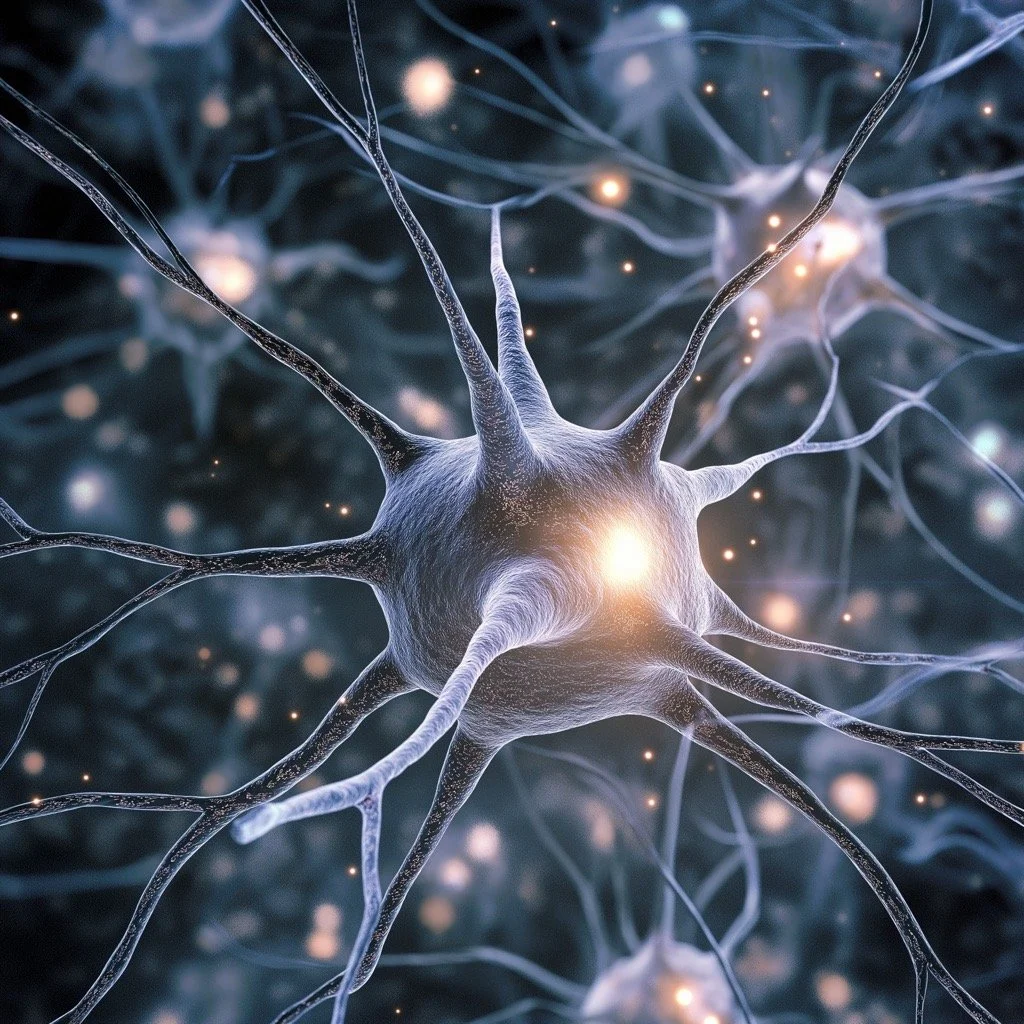
Neural Networks: Understanding Activation Functions and Pooling Layers
This article explains the roles of activation functions and pooling layers in neural networks, which are essential for creating models that can learn complex patterns. Activation functions, like ReLU and sigmoid, introduce non-linearity, allowing the network to handle diverse data. Pooling layers, such as max and average pooling, reduce feature map dimensions, enhancing computational efficiency and robustness to variations. The article highlights how these elements work together, discusses their pros and cons, and offers best practices for choosing and combining them. Experimentation and adaptability are key for optimizing neural network performance.
bhavya sharma - 1 November 2024 - Article in English
-

Machine Learning Applications Across Industries
This article explores how machine learning (ML) transforms industries by enabling smarter decision-making and automation. In healthcare, ML aids in disease diagnosis, medical imaging, and drug discovery. Finance leverages ML for fraud detection, stock market prediction, and personalized banking. In e-commerce, it enhances recommendations, inventory management, and sentiment analysis. Manufacturing uses ML for predictive maintenance and quality control, while computer vision supports facial recognition, AR, and VR. Agriculture benefits from ML in pest detection and precision farming, helping optimize resources and improve yields across diverse fields.
Analytics Drift - 10 November 2024 - Article in English
-

AI in Mining with Fatigue Science's CEO Andrew Morden
The article discusses the transformative impact of AI, particularly machine learning and robotics, on the mining industry. It highlights the shift from reactive to predictive systems for enhancing safety and operational efficiency, using examples like predictive maintenance, fatigue management, and autonomous robots. By analyzing real-time data, AI technologies enable mining companies to anticipate risks, optimize resource use, and improve decision-making. The article emphasizes that successful AI adoption requires strong leadership, a cultural shift towards data-driven strategies, and trust in AI's potential to reshape safety and productivity in mining.
Andrew Morden - 8 November 2024 - Article in English
-

What Are Foundation Models?
The article explains "foundation models," large-scale AI architectures that serve as adaptable bases for diverse applications like language processing, computer vision, and content generation. Trained on vast data, these models, such as OpenAI’s GPT, Meta AI’s Llama, and Stability AI’s Stable Diffusion, can be fine-tuned for specific tasks across industries. Their scalability and adaptability make them foundational to AI development, enabling quicker, cost-effective AI solutions without starting from scratch. Despite their versatility, foundation models face challenges with interpretability, privacy, and accuracy, often acting as "black boxes" with potential biases and risks.
Ellen Glover - 15 October 2024 - Article in English
-

How specialty clinical practices can leverage AI for RCM
This article, the final in a three-part series, explores how AI and automation can enhance revenue cycle management (RCM) for specialty clinical practices, improving cash flow and reducing administrative burdens. AI technologies like machine learning can streamline repetitive tasks, including claims processing, claim scrubbing, and denials management, enhancing accuracy and efficiency. Predictive analytics provides insights into cash flow and patient payment patterns. By partnering with outsourced RCM providers who use advanced AI tools, practices gain access to cutting-edge solutions that may otherwise be cost-prohibitive, optimizing both financial health and patient care.
Jason Handza, MD - 18 October 2024 - Article in English
-
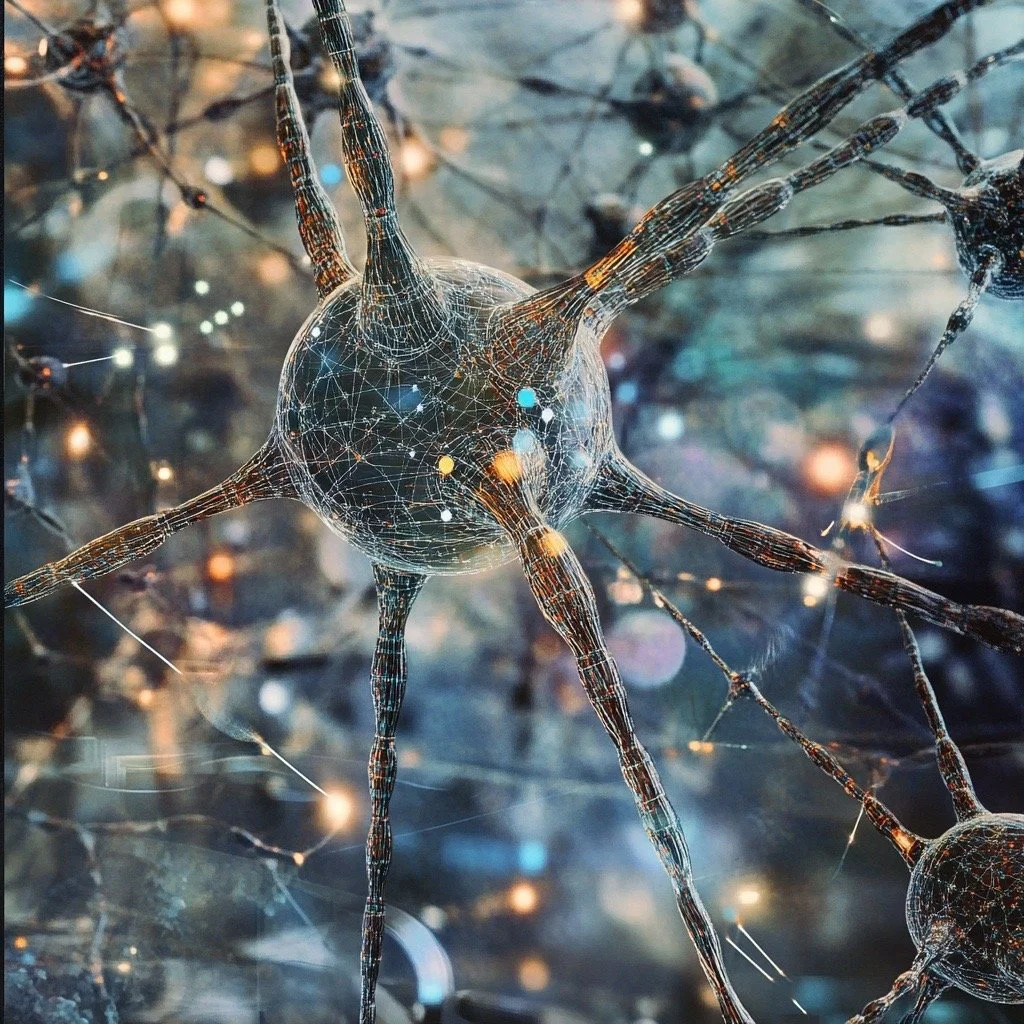
Neural Networks vs AI – Decoding the Differences
The article explains the differences between artificial intelligence (AI), machine learning (ML), deep learning (DL), and neural networks. It uses the analogy of Russian nesting dolls to clarify that AI is the broadest concept, with ML as a subset, DL as a subset of ML, and neural networks forming the foundation of DL. AI focuses on enabling machines to perform tasks requiring human intelligence, while neural networks are specific architectures that mimic the human brain’s structure to recognize patterns and learn from data. The article further outlines types of neural networks, such as RNNs and CNNs, and highlights that neural networks excel in tasks like image recognition, while AI has a broader adaptive capacity.
Malavika Madgula - 30 October 2024 - Article in English
-
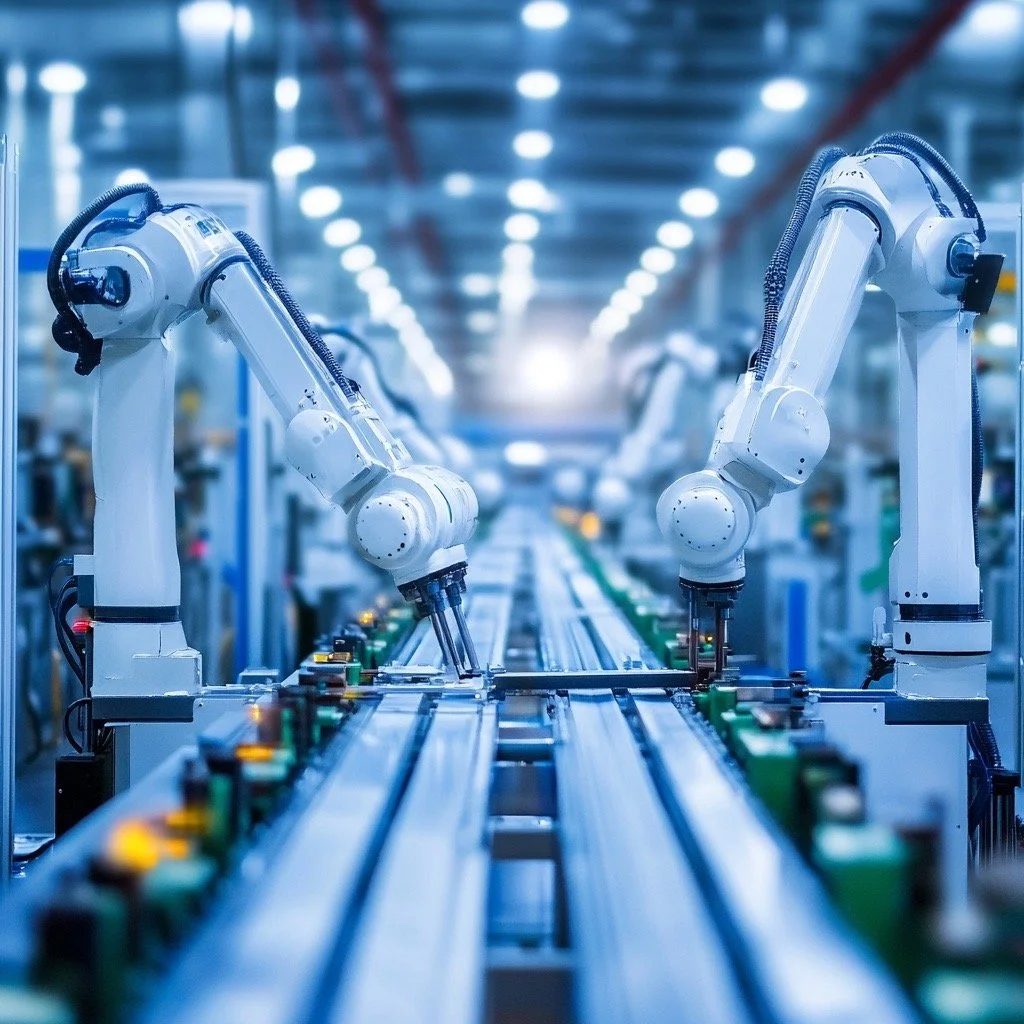
How AI Is Transforming the Manufacturing Industry for the Future
The article explores how AI is revolutionizing the manufacturing industry by increasing efficiency, reducing costs, and driving innovation. Key applications include predictive maintenance, generative design, quality control, supply chain optimization, and robotics. Companies like Siemens, General Motors, and Adidas are leveraging AI for faster production, reduced waste, and customized designs. The future of AI in manufacturing includes fully autonomous factories, sustainable practices, and enhanced human-machine collaboration. Embracing AI is crucial for manufacturers aiming to stay competitive and lead in a rapidly evolving industry.
Onome - 3 October 2024 - Article in English
-

Machine learning cracked the protein-folding problem and won the 2024 Nobel Prize in chemistry
The article discusses the 2024 Nobel Prize in chemistry, awarded to Demis Hassabis, John Jumper, and David Baker for using machine learning to solve the protein-folding problem, a long-standing challenge in biology. Their breakthrough, achieved through DeepMind's AlphaFold2, accurately predicts 3D protein structures from amino acid sequences, revolutionizing biology, drug discovery, and disease research. It highlights how machine learning, traditionally a tool in AI, is now crucial in scientific advancements. The prize also underscores the intersection of science and technology, particularly in the fields of biology, chemistry, and artificial intelligence.
Marc Zimmer - 9 October 2024 - Article in English
-

Pharma 4.0: Shaping the Future of Pharmaceutical Manufacturing
The article discusses Pharma 4.0, the integration of advanced technologies like artificial intelligence (AI), the Internet of Things (IoT), robotics, and automation into pharmaceutical manufacturing. This technological evolution has improved efficiency, quality control, and enabled the development of personalized medicine. Key components of Pharma 4.0 include digitalization, AI, and robotics. The article highlights benefits such as better product quality and faster time to market but also addresses challenges, including high costs, regulatory uncertainties, and the need for expertise in adopting these technologies. Despite hurdles, Pharma 4.0 holds great promise for transforming the industry.
Priyom Bose - 16 October 2024 - Article in English
-

Perplexity AI vs ChatGPT (2024): AI App Comparison
The article compares Perplexity AI and ChatGPT, two leading AI platforms, focusing on their strengths, weaknesses, and use cases. Perplexity AI excels in research-oriented tasks with real-time web search and source-backed answers, making it ideal for students, researchers, and professionals who need accurate, up-to-date information. ChatGPT, by contrast, offers versatile conversational abilities, content creation, and multimodal capabilities, making it useful for broader applications like writing, brainstorming, and interactive dialogues. Both have free versions and $20/month premium options, but which is better depends on user needs for accuracy or creative flexibility.
Sam Rinko - 25 September 2024 - Article in English
-

Optimizing Performance: AI Applications in Operations
The article discusses the impact of AI applications on manufacturing operations, highlighting key areas like predictive maintenance, automated quality control, and data-driven decision-making. AI technologies such as machine learning, computer vision, and real-time monitoring improve efficiency by reducing downtime, enhancing product quality, and optimizing resource management. It also emphasizes the importance of integrating AI into existing systems and providing staff training to fully leverage its benefits. Overall, AI revolutionizes operational processes, leading to improved performance and decision-making in manufacturing environments.
Michael Lynch September 2024 - Article in English
-
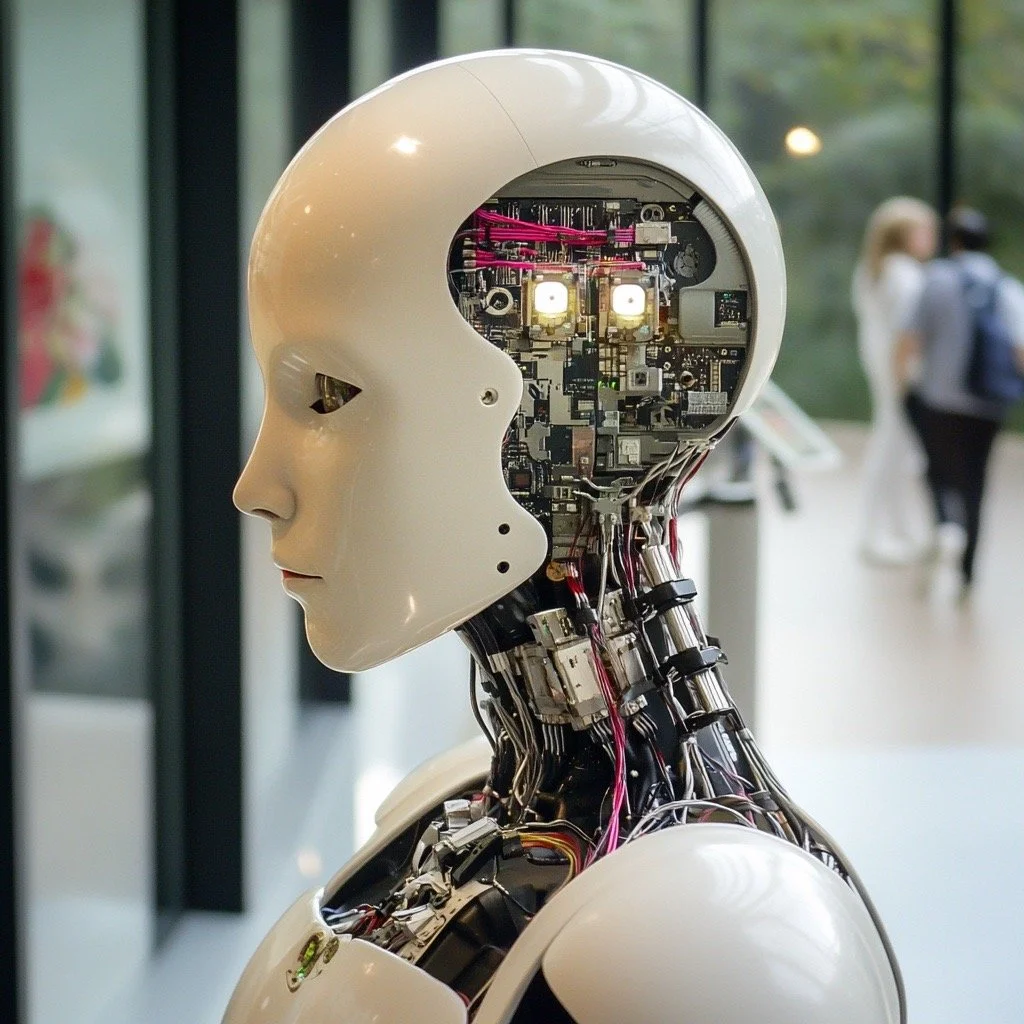
The Strategic Choice: Embracing Open Source AI
This article explores the advantages of adopting open-source AI for businesses. It highlights how open-source AI fosters innovation, flexibility, and customization, allowing organizations to build adaptable infrastructures and avoid vendor lock-in. The transparency and community-driven development of open-source models offer organizations better control over their AI applications, cost efficiency, and enhanced security. It also discusses various tools and models like Llama, Gemma, and TensorFlow, which enable organizations to tailor solutions to their needs. Embracing open-source AI positions companies for long-term success in a rapidly evolving technological landscape.
Jose Luis Amoro - 3 October 2024 - Article in English
-

5 Essential Machine Learning Algorithms Transforming Bussiness Operations
The article explores the transformative impact of machine learning (ML) on business operations. It highlights how businesses use ML algorithms to optimize processes, predict consumer behavior, and improve decision-making. The piece outlines five essential ML algorithms—regression, classification, clustering, deep learning, and dimensionality reduction—along with their applications in industries like finance, healthcare, and eCommerce. It explains how businesses can choose the right algorithm based on their goals and data. The article emphasizes the growing importance of ML, predicting that its adoption will drive efficiency, innovation, and competitiveness across industries.
Sudeep Srivastava - 24 September 2024 - Article in English
-
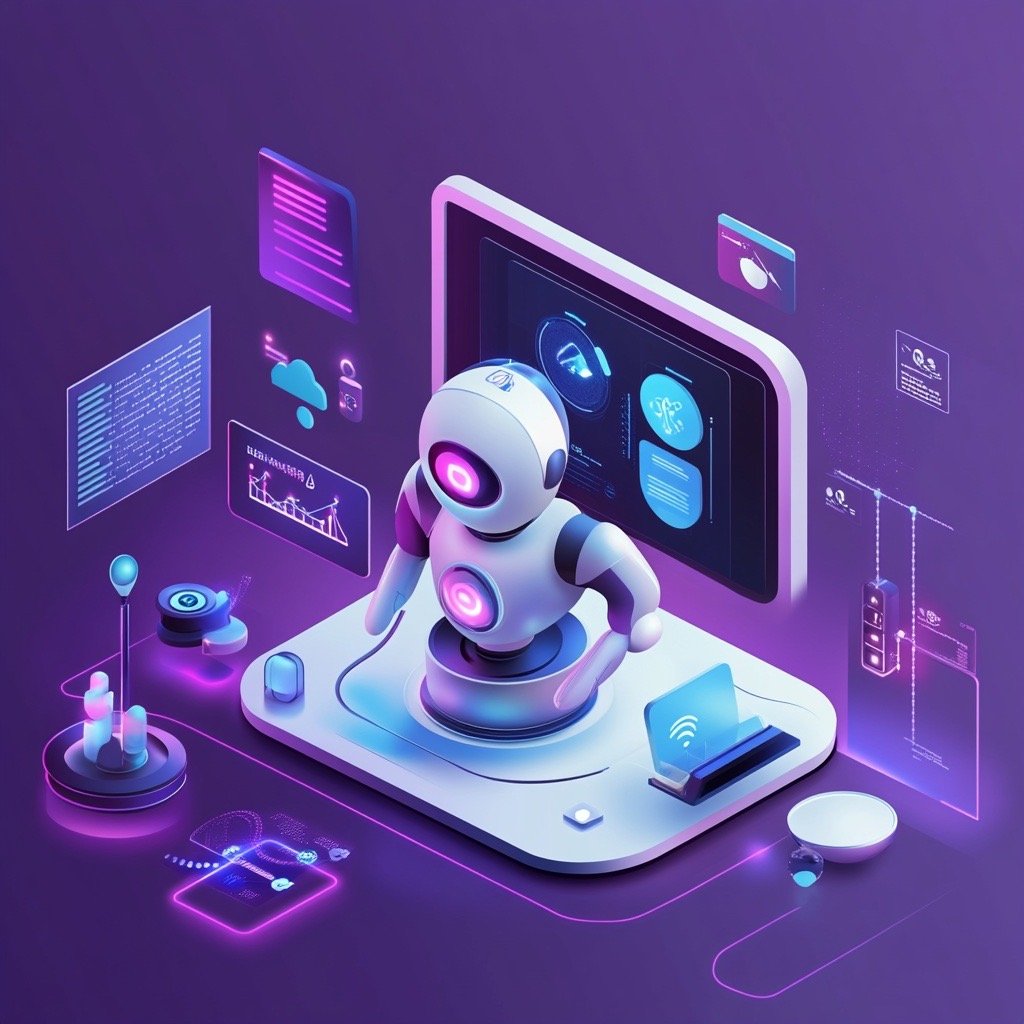
Decoding the Differences of Traditional AI vs. Generative AI in Marketing
The article contrasts traditional AI with generative AI in marketing. Traditional AI focuses on tasks like automation, predictions, and data analysis through machine learning, natural language processing, and computer vision. In contrast, generative AI specializes in creating new content, from marketing campaigns to dynamic pricing and market research, using technologies like Generative Adversarial Networks (GANs) and transformers. Marketers need to understand both AI types to harness their full potential. While traditional AI enhances decision-making, generative AI drives creativity. Both will shape future customer engagement, though concerns like data privacy and ethics remain pivotal.
Jonathan Moran - 20 September 2024 - Article in English
-

AI explained for non-technical business leaders
The article provides a comprehensive overview of artificial intelligence (AI) for executives and IT leaders. It explains foundational concepts like machine learning, deep learning, and generative AI, and how these technologies are transforming industries. Machine learning is described as identifying patterns in data to make predictions, while deep learning uses neural networks to analyze complex data, powering tools like facial recognition and voice assistants. The article also highlights AI's applications in businesses, such as fraud detection, predictive maintenance, and personalized recommendations, while acknowledging AI's limitations in replicating human creativity and intuition.
Software Improvement Group - September 2024 - Article in English
-

Data readiness: Paving the way for M&D’s Al revolution
The article discusses the importance of data readiness for implementing AI and machine learning (ML) in manufacturing and distribution (M&D) businesses. It emphasizes that clean, accurate, and secure data is crucial for the success of AI and ML in Industry 4.0, which is driven by data and interconnected technologies. The piece outlines common AI use cases, including predictive maintenance, inventory management, and sales, highlighting the need for proper data collection, preparation, and protection. It also stresses the importance of having skilled staff, cybersecurity measures, and ongoing improvements to ensure effective AI adoption in M&D.
Shawn Gilronan - 5 September 2024 - Article in English
-

New AI learning model improves stance detection performance and efficiency
Researchers from A*STAR in Singapore developed a new AI learning model that improves stance detection, especially in low-resource settings where training data is limited. The model uses collaborative mechanisms to verify knowledge from different sources and optimize learning with fewer parameters, enhancing training efficiency. By integrating this approach, the model more accurately identifies opinions in data such as tweets or reviews. Tested on several datasets, it outperformed other models with higher F1 scores, making AI more practical for specialized research fields like social media monitoring and governance strategies.
Tsinghua University Press - 3 September 2024 - Article in English
-

Brain-Computer Interfaces Boosted by Novel AI Algorithm
The article discusses how a novel AI algorithm, developed by researchers at the University of Southern California, can improve brain-computer interfaces (BCIs) by decoding complex brain activity associated with behaviors and mental states. Named DPAD (dissociative prioritized analysis of dynamics), this recurrent neural network-based algorithm enhances the identification of patterns in noisy brain data, advancing BCI performance and offering potential treatments for neurological disorders like depression and paralysis. By combining deep learning and nonlinear dynamical modeling, the technology offers hope for those affected by neurodegenerative diseases.
Cami Rosso - 10 September 2024 - Article in English
-

DataDriven Decision Making: Leveraging Analytics for Improved Organizational Outcomes
The article explores how Data-Driven Decision Making (DDDM) is transforming organizational strategies by leveraging analytics for improved outcomes. It highlights how businesses, like XeroTech, have increased efficiency and profits by integrating data analytics into their decision-making processes. The piece covers various aspects of DDDM, including key techniques like data visualization and predictive analytics, the role of analytics in business strategies, overcoming challenges, and the tools supporting data-driven decisions. Additionally, it discusses future trends in data analytics and provides case studies showcasing successful data-driven organizations.
Psico-smart Editorial - 28 August 2024 - Article in English
-

AI is cannibalizing itself. And creating more AI
The article explores the phenomenon of AI "cannibalizing" itself by consuming AI-generated content to train new models. As human-generated data becomes scarce, AI models increasingly rely on synthetic data, creating a feedback loop that can degrade output quality, known as "model collapse." Despite efforts to filter and improve synthetic data, AI-generated content is rapidly filling the internet, leading to concerns about its dominance. The article touches on the "dead internet theory," which suggests that most online content is now bot-driven, though experts claim human creativity still largely shapes the web.
Devika Rao - 30 August 2024 - Article in English
-

How to Prepare for an AI Job Interview?
The article provides a comprehensive guide for preparing for an AI job interview, emphasizing the vast range of knowledge required, from machine learning and deep learning to natural language processing and computer vision. It highlights key AI concepts such as overfitting, cross-validation, neural networks, GANs, and Transformer-based models like GPT and BERT. Additionally, it underscores the importance of practical skills, like model deployment and monitoring, and suggests gaining hands-on experience through projects or Kaggle competitions. The article also addresses the ethical implications of AI and the need to stay updated on the latest industry advancements.
Badrinarayan - 26 August 2024 - Article in Englih
-

AI IN BUSINESS PROCESS AUTOMATION: SOLUTIONS, REAL CASES, HOW TO BUILD
The article explores the integration of AI in Business Process Automation (BPA), highlighting how AI enhances traditional BPA by adding cognitive abilities. It discusses AI's role in automating complex tasks, enabling smarter decision-making, improving scalability, and ensuring continuous improvement. The article also presents real-world examples of AI in industries like finance, fashion, and hospitality, illustrating how AI-driven BPA enhances efficiency, productivity, and competitiveness. It concludes with steps for implementing AI in business processes and the future impact of AI on BPA.
Oleh Komenchuk - 16 August 2024 - Article in English
-

The Power Of Machine Learning: The Business Impact On Real-Time Data
The article by David Flower emphasizes the transformative impact of machine learning (ML) and real-time data on business operations. By 2030, the streaming data market is projected to exceed $73 billion, while the ML market could reach $210 billion. These technologies enable better decision-making, improved operational efficiency, and innovative product development. ML algorithms can swiftly analyze data to enhance customer experiences, automate processes, and optimize IoT systems. Organizations investing in these technologies can gain competitive advantages by quickly adapting to market changes and improving efficiency, while those that don't may fall behind.
David Flower - August 2024 - Article in English
-

AI in payments: balancing innovation with practicality
The article explores how artificial intelligence (AI) is revolutionizing the payments industry by enhancing security, efficiency, and customer experience. It covers various AI technologies, such as machine learning, natural language processing, and predictive analytics, which are used for fraud detection, risk assessment, and process automation. The piece also addresses the challenges of AI adoption, including data privacy, ethical considerations, and implementation costs. Looking forward, AI is expected to play a crucial role in emerging payment models, data-driven decision-making, and industry collaboration, making it essential for businesses to invest in AI-driven solutions.
Ashish Gujalwar - August 2024 - Article in English
-

AI-Driven Sensor Revolutionizes Viscosity Measurement
A recent article in the journal Energies highlights a study that introduces the New Generation Predicted Viscosity (NGPV) sensor, which leverages artificial intelligence (AI) to revolutionize viscosity measurement, especially under extreme conditions like high temperatures and pressures. Traditional methods struggle in such environments, but the NGPV sensor, based on a supervised artificial neural network (ANN), accurately predicts fluid viscosity by analyzing operational parameters like temperature, pressure, and flow rate. The sensor achieved remarkable performance. This innovation enhances industrial applications, particularly in energy management and hypersonic technologies, offering precise, real-time viscosity monitoring without recalibration.
Noopur Jain - 31 July 2024 - Article in English
-

New supercomputing network could lead to AGI, scientists hope, with 1st node coming online within weeks
Researchers are working to accelerate the development of artificial general intelligence (AGI) through a global network of supercomputers, with the first node going online in September 2024. Built by SingularityNET, this network will form a ""multi-level cognitive computing network"" to host and train architectures needed for AGI, such as deep neural networks and large language models. The supercomputers will use advanced hardware like Nvidia GPUs and unique software frameworks like OpenCog Hyperon to enable continuous learning and self-modifying AI. The goal is to eventually achieve AI systems surpassing human intelligence.
Lisa D. Sparks - 10 August 2024 - Article in English
-

AI in Learning: 8 Use Cases of Using AI to Enhance Employee Skills
AI in learning and development is revolutionizing traditional training methods, making them more engaging, effective and scalable. By embracing AI, organizations can remain competitive, innovative and better equipped to meet the changing demands of the workforce. By integrating AI into learning and development, organizations not only improve the effectiveness of their training programs, but also ensure that they can adapt to a rapidly changing workforce. Adopting AI in training and development helps companies stay competitive and better equip themselves to meet future challenges. This summary takes up the key points and examples from the article, highlighting the transformative impact of AI on employee training in different sectors.
Viacheslav Petrenko - 14 August 2024 - Article in English
-
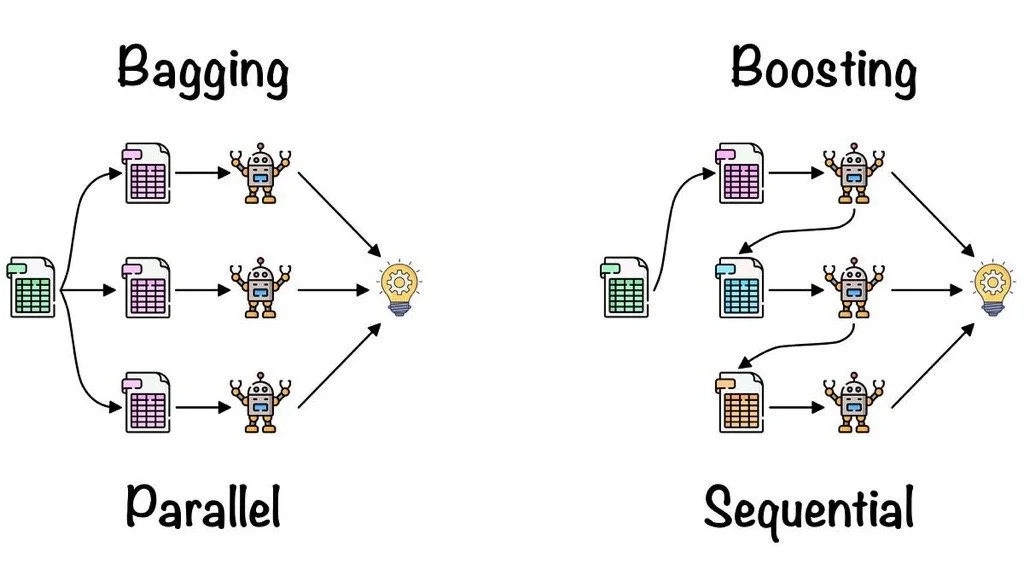
Bagging vs Boosting in Machine Learning
The article explains Bagging and Boosting, two ensemble learning techniques in machine learning. Bagging, or Bootstrap Aggregating, improves model stability and accuracy by training multiple subsets of data independently and averaging their predictions, commonly used in Random Forests. Boosting, on the other hand, builds models sequentially, focusing on correcting the errors of previous models to create a strong classifier, with AdaBoost being a well-known example. Both methods reduce model variance and enhance stability, but Bagging aims to decrease variance, while Boosting focuses on reducing bias.
geeksforgeeks - 23 July 2024 - Article in English
-

12 Reasons AI Readiness Is the New Imperative
The article emphasizes the critical need for organizations to achieve AI readiness, focusing on leveraging AI, especially generative AI like ChatGPT, to enhance productivity and competitive advantage. It outlines the importance of data in AI applications, advocating for efficient data storage, management, and access systems to support AI/ML activities. The piece stresses that understanding and using AI is crucial for individuals and businesses to avoid obsolescence. It concludes by promoting Pure Storage’s AI-optimized infrastructure as a solution to meet these demands, underscoring that AI readiness is an imperative, not an option, for modern enterprises.
Kirk Borne - 22 July 2024 - Article in English
-

New tool to estimate cities’ rooftop PV potential considers roof superstructures
Scientists from Germany developed SolarNet+, a deep learning-based framework for estimating city-scale rooftop solar potential using aerial images. SolarNet+ uniquely accounts for roof superstructures like windows and chimneys, which can obstruct solar installations. The framework uses a convolutional neural network (CNN) to simultaneously learn roof orientation and superstructure maps, improving prediction accuracy. Tested on data from Munich, Brussels, and the small German city of Wartenberg, SolarNet+ outperformed other methods in predicting roof orientations and superstructures. Future research aims to enhance transferability by collecting diverse training samples and implementing advanced adaptation techniques.
LIOR KAHANA - 1 August 2024 - Article in English
-

Build a Learning Data Dream Team
The article discusses building an effective Learning Data Dream Team for talent development by integrating diverse perspectives and roles. It emphasizes that data-informed insights require a collaborative approach, involving not only data scientists but also learning designers, business sponsors, developers, platform managers, subject matter experts, and AI ethics managers. It outlines the importance of aligning measurement strategies, integrating data and analytics within the learning design process, and ensuring robust data governance. The article also highlights successful applications of learning analytics, such as predictive analytics, personalized learning pathways, and adaptive assessments, to enhance learning outcomes and student satisfaction.
Megan Torrance - 1 July 2024 - Article in English
-

How AI agents can self-improve with symbolic learning
The article discusses a new framework called "agent symbolic learning" proposed by AIWaves researchers. This framework aims to enable AI agents to self-optimize and improve autonomously, addressing the limitations of current "model-centric" and "engineering-centric" approaches that require significant manual effort. By implementing a process similar to neural network training, the framework allows agents to adjust their prompts, tools, and pipelines based on data-driven feedback. Experiments show that this method outperforms existing approaches on benchmarks and complex tasks like creative writing and software development, suggesting a step toward more autonomous and adaptable AI systems.
Ben Dickson - 8 July 2024 - Article in English
-
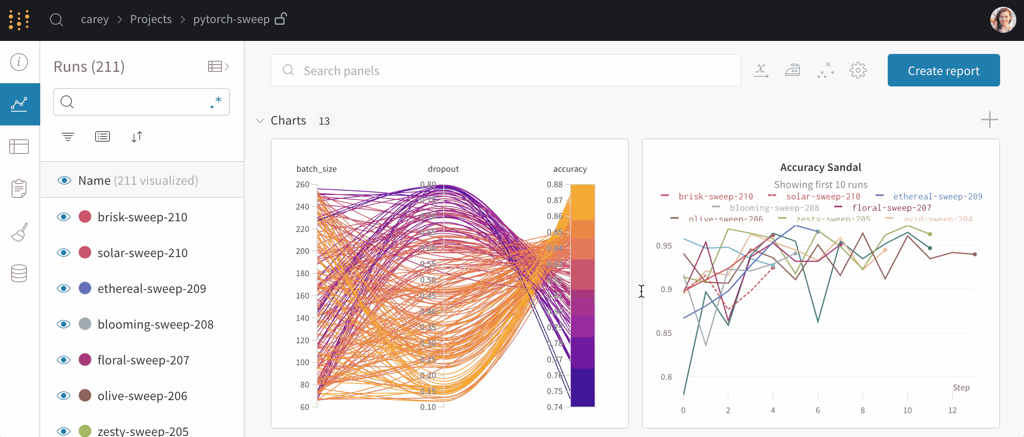
The Best Weights & Biases Alternatives
The article ""The Best Weights & Biases Alternatives"" explores various alternatives to the MLOps tool Weights & Biases (WandB), highlighting its features and limitations. Alternatives include Neptune, TensorBoard, Comet, MLflow, Kubeflow, and Amazon SageMaker Studio, each offering unique benefits like notebook hosting, ML lifecycle management, and production use-cases. The article discusses key features, pricing, and comparative strengths of each tool, aiding users in selecting the best fit for their specific machine learning experiment tracking and management needs.
Ejiro Onose - 10 July 2024 - Article in English
-

A survey of synthetic data augmentation methods in machine vision
Deep learning in machine vision demands vast annotated data, often hard to gather. Synthetic data augmentation creates new data by transforming existing ones or generating from scratch, addressing issues like small, low-quality, or imbalanced datasets. This survey focuses on synthetic methods: generative modeling, computer graphics, neural rendering, and neural style transfer. Each method's principles, applications, and limitations are detailed, emphasizing their growing role in overcoming data scarcity in tasks like autonomous driving. The survey highlights synthetic augmentation's effectiveness in enhancing model performance where real data is scarce or impractical to obtain.
Alhassan Mumuni - 27 June 2024 - Article in English
-

TikTok Data Scientist Interview Questions + Guide in 2024
The article provides a comprehensive guide to preparing for a Data Scientist interview at TikTok in 2024. It details the interview process, which includes stages like initial screening, technical assessments, and behavioral interviews. Commonly asked technical questions are discussed, covering topics such as SQL, machine learning, A/B testing, and statistics. Practical tips for preparation, such as understanding the interview structure, honing technical skills, and improving communication, are offered. Additionally, it includes FAQs about salaries and alternative companies to apply for Data Scientist roles, aiming to equip candidates with the necessary knowledge to succeed.
IQ Team - 24 June 2024 - Article in English
-
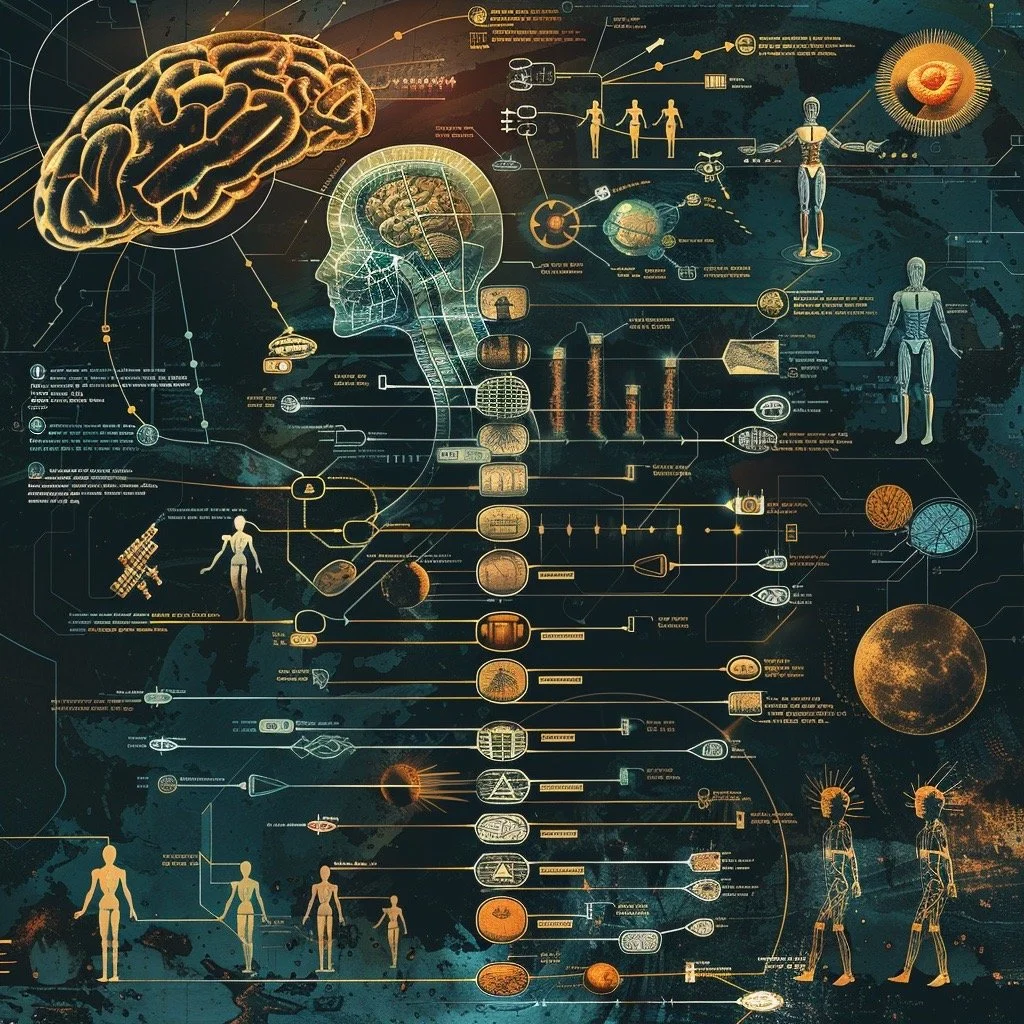
Brief History of Artificial Intelligence - From 1900 till Now
AI has seen countless innovations and continues to evolve, incorporating human qualities into its functionality to improve business decision-making. The history of artificial intelligence is marked by major milestones and continuous progress. From early philosophical reflections to the development of modern deep learning algorithms, AI has become a powerful and integral part of contemporary technology. As research progresses, the potential applications of AI are vast and promise to further transform industries and society.
Rebecca Reynoso - 3 July 2024 - Article in English
-

New algorithm discovers language just by watching videos
Mark Hamilton, an MIT PhD student, developed ""DenseAV,"" an algorithm that learns human language by watching videos. Inspired by observing animal communication, DenseAV links audio and visual data to understand words and sounds. Unlike previous models, DenseAV uses a two-sided approach to separately process audio and visual inputs, avoiding pre-trained language models. Trained on 2 million YouTube videos, it outperforms others by finely matching sounds and images. Applications include learning from vast video content, understanding animal communication, and connecting seismic sounds with geology.
Rachel Gordon - 11 June 2024 - Article in English
-

Prediction of post-delivery hemoglobin levels with machine learning algorithms
The study aims to predict postpartum hemoglobin (Hb) levels using machine learning (ML) algorithms based on pre-labor clinical data and laboratory measurements. Conducted on 1974 women with non-complicated singleton pregnancies, the research identified key predictors: parity, gestational age, pre-delivery hemoglobin, fibrinogen levels, and pre-labor platelet count. Various ML models were trained and evaluated, with the artificial neural network achieving the highest accuracy (RMSE: 0.62). This model was deployed as a web-based calculator to aid in predicting post-delivery Hb levels and potential postpartum hemorrhage (PPH) risks. The study highlights the potential of ML in improving early intervention and patient outcomes in obstetrics.
Sepehr Aghajanian - 17 June 2024 - Article in English
-

Artificial Intelligence, we must look beyond the hype
The article by Nikolas Badminton on Futurist.com discusses the historical evolution and current state of artificial intelligence (AI). It traces AI's journey from the early promises and developments in the 1990s, through notable milestones such as IBM’s Deep Blue defeating Garry Kasparov in 1997, the rise of deep learning in the mid-2000s, and significant achievements in the 2010s like IBM Watson winning Jeopardy! and DeepMind’s AlphaGo triumph. The article highlights the hype surrounding AI today, driven by breakthroughs, public fascination, and marketing, while emphasizing the need for critical thinking and realistic expectations. It calls for a shift from hype to hope, recognizing AI's potential long-term impact while tempering short-term overestimations.
Nikolas Badminton - 17 June 2024 - Article in English
-

Probabilistic machine learning for battery health diagnostics and prognostics—review and perspectives
The article discusses the challenges and advancements in diagnosing and predicting lithium-ion battery health using probabilistic machine learning models. Traditional deterministic models have overlooked cell-to-cell variability and time-varying conditions, crucial for accurate health diagnostics and prognostics. The paper reviews current probabilistic approaches that incorporate uncertainty quantification, offering a more reliable prediction of battery health and degradation. It emphasizes the need for these models to handle small datasets, adapt to real-world conditions, and improve battery management systems.
Adam Thelen - 3 June 2024 - Article in English
-

The Impact of AI on Market Research: Opportunities, Challenges and Real-World Applications
The article explores how AI is revolutionizing market research by enhancing data analysis, automating tasks, and enabling natural language interactions. AI's capabilities, such as sentiment analysis and predictive analytics, provide valuable insights into market trends, improving the accuracy and speed of data processing. Generative AI enhances data collection, management, analysis, and visualization, streamlining tasks and improving decision-making. Despite challenges like bias and data security, AI tools such as ChatGPT, Brandwatch, and Pecan offer innovative solutions for efficient market research. AI acts as a powerful assistant, augmenting human expertise in this dynamic industry.
TGM RESEARCH BLOG - June 2024 - Article in English
-

Top 10 Open Source Artificial Intelligence Software
The article discusses the top 10 open-source artificial intelligence (AI) software tools that have revolutionized AI development. It highlights TensorFlow, PyTorch, Apache MXNet, Keras, OpenAI Gym, Caffe, Theano, H2O.ai, Microsoft Cognitive Toolkit (CNTK), and Scikit-learn. Each tool's overview, example use cases, and key functionalities are detailed, showcasing their unique features and applications in AI model building and deployment. The article concludes by emphasizing these tools' versatility, performance, and scalability, making them essential for developers, researchers, and businesses tackling various AI challenges.
Srinam - 31 May 2024 - Article in English
-

Use Cases of Machine Learning in Finance
The article by James Howell explores the growing use of machine learning (ML) in the finance sector. It highlights how financial institutions, like banks and investment funds, use ML to enhance financial analysis, forecasting, and engineering. Key use cases include financial monitoring, automation of services, data management, trading assistance, loan approval, fraud detection, regulatory compliance, and churn prediction. The article emphasizes ML's ability to optimize processes, reduce costs, improve decision-making, and manage risks, ultimately transforming financial services and offering new opportunities for efficiency and innovation.
James Howell - 20 May 2024 - Article in English
-

Why reliable data is essential for trustworthy AI
The article emphasizes the importance of reliable data for trustworthy AI, particularly in the context of generative AI (GenAI) tools like ChatGPT and Google's Gemini. It highlights the rapid adoption of GenAI in businesses, predicting widespread usage by 2026. However, concerns about AI-generated biased or false results, known as hallucinations, underscore the need for robust data governance. The article discusses regulatory impacts, such as the EU's AI Act, and stresses the significance of data quality and transparency in AI processes to avoid reputational and legal risks. Ensuring AI outputs are accurate and trustworthy is crucial for user confidence and decision-making.
Stephen Pritchard - 28 May 2024 - Article in English
-
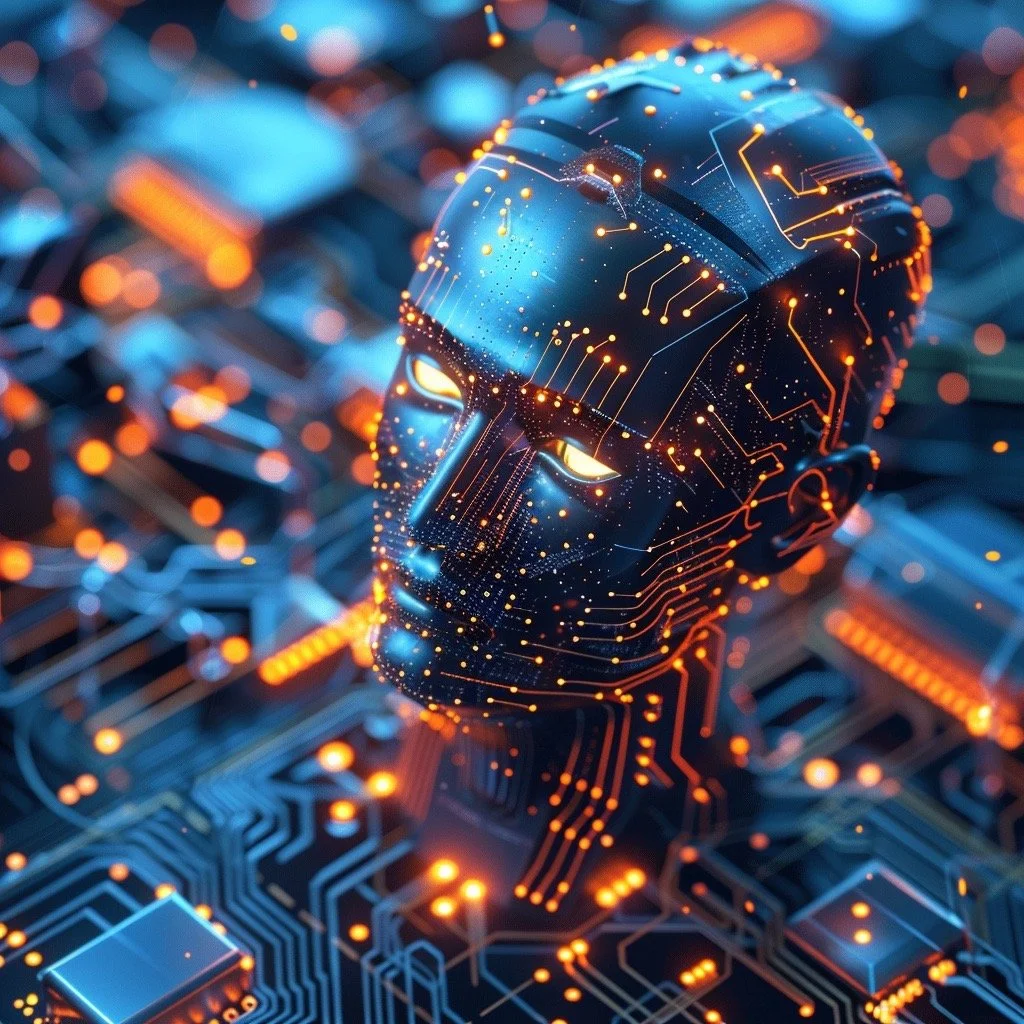
AI Cybersecurity: Real-Life Examples & Limitations In 24′ in '24
The article explores the impact and limitations of AI in cybersecurity as of 2024. AI is revolutionizing cybersecurity through machine learning, advanced analytics, and automation, enhancing threat detection, reducing response times, and improving resource allocation. Despite its benefits, AI faces challenges such as "AI washing," privacy concerns, technical limitations requiring human oversight, and a lack of transparency. Real-life examples illustrate these issues, including Coca-Cola's AI claims and Facebook's content moderation. The article also highlights how AI addresses cybersecurity challenges like alert overload, phishing, malware, and financial data security with examples from IBM, Google, Darktrace, and Capital One.
Altay Ataman - 11 June 2024 - Article in English
-

Scientists use generative AI to answer complex questions in physics
Researchers from MIT and the University of Basel have developed a machine-learning framework using generative AI to map phase diagrams of physical systems. This method automates the detection of phase transitions, overcoming the limitations of traditional manual techniques that require extensive theoretical knowledge and large labeled datasets. The AI approach leverages generative models to efficiently classify phase changes based on physical parameters. This innovation enhances the study of thermodynamic properties in novel materials and quantum systems, potentially leading to the autonomous discovery of new phases of matter. The findings are published in "Physical Review Letters"
Adam Zewe - 16 Mai 2024 - Article in English
-

How Deep Learning Lets AI Tackle Complex Tasks
The article discusses the advancements in deep learning, a subset of AI inspired by human brain neurons, using artificial neural networks with multiple layers. This approach allows machines to automatically discover patterns in vast datasets, enhancing capabilities like natural language processing and creativity in art and music. It highlights significant achievements such as OpenAI's GPT-3 and image-generating models like DALL-E. Despite its progress, deep learning faces challenges like data requirements, bias, and lack of common sense. Researchers aim to make it more efficient and interpretable. The article also mentions AGI development and ethical considerations surrounding AI's future impact on society.
PYMNTS - 13 May 2024 - Article in English
-

Rethinking the production and publication of machine-reusable expressions of research findings
The article proposes a novel pre-publication approach called "reborn" to ensure scientific knowledge is produced in a machine-reusable format during the data analysis phase of research. This method contrasts with traditional post-publication knowledge extraction, which is time-consuming and often inaccurate. The approach integrates with computing environments like RStudio or Jupyter, uses the Open Research Knowledge Graph for organizing FAIR (Findable, Accessible, Interoperable, Reusable) scientific knowledge, and involves three stages: production, deposition, and collection. Tested in three use cases, it demonstrates improved accuracy, richness, and technological simplicity, enhancing efficiency and reliability in scientific knowledge reuse.
Mohamad Yaser Jaradeh - 21 May 2024 - Article in English
-

Intel Builds World’s Largest Neuromorphic System to Enable More Sustainable AI
Intel has developed Hala Point, the world's largest neuromorphic system, featuring 1.15 billion neurons for sustainable AI. Using Loihi 2 processors, it achieves over 10 times more neuron capacity and up to 12 times higher performance than previous systems. Hala Point aims to revolutionize AI by combining deep learning efficiency with brain-inspired learning and optimization capabilities, potentially enabling real-time continuous learning for various applications. Sandia National Laboratories will utilize Hala Point for advanced brain-scale computing research, contributing to advancements in AI efficiency and adaptability.
Laura Stadler - 17 April 2024 - Article in English
-

AI in Telecom – Exploring the Key Business Benefits, Use Cases, Examples and Challenges
The article explores the transformative role of artificial intelligence (AI) in the telecommunications industry, highlighting its significant business benefits, various use cases, real-world examples, and associated challenges. AI addresses critical issues like increased data consumption and network congestion, offering solutions for enhanced network management, predictive maintenance, improved customer service, and optimized resource utilization. It also discusses AI's potential for cost reduction, fraud detection, and employee development. The article underscores AI's impact on telecom through real-world examples from companies.
Sudeep Srivastava - 10 Mai 2024 - Article in English
-
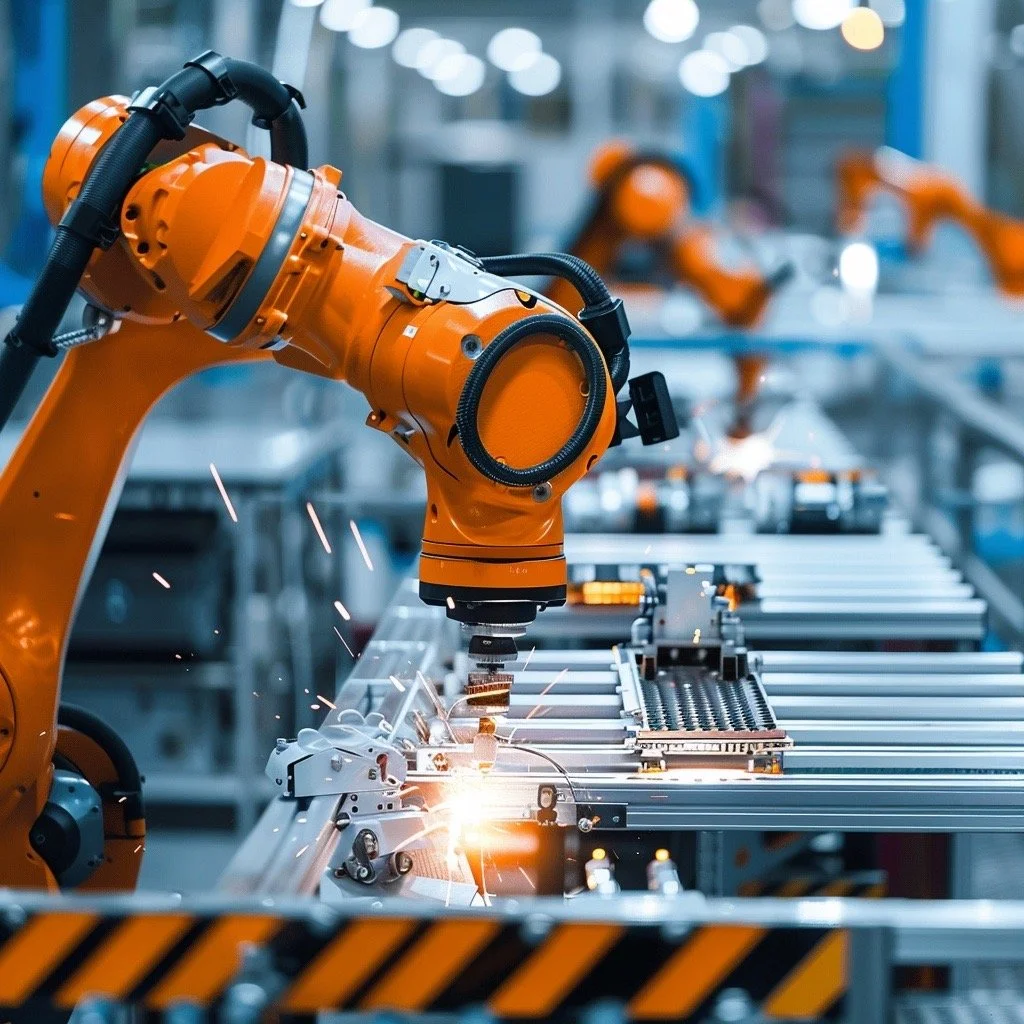
The Interplay Between Robotics and Artificial Intelligence in Manufacturing
The article discusses the transformative impact of artificial intelligence (AI) and robotics on manufacturing, highlighting their potential to enhance efficiency, quality, and flexibility. AI and robotics automate repetitive and hazardous tasks, optimize production planning, enable mass customization, and improve quality control. Integrating these technologies leads to significant cost savings and increased productivity. The article emphasizes the importance of adopting AI and robotics to stay competitive, with projections showing substantial market growth. DELMIA's software tools are showcased as crucial in optimizing and validating robotic processes, further driving the future of smart manufacturing.
Louis Columbus - 10 Mai 2024 - Article in English
-

A collaborative ecosystem
The article explores the collaborative ecosystem between physicists, computer scientists, and industry in advancing machine learning. It highlights the historical contributions of physicists to machine learning, such as the Hough transform and spin glass concepts, and emphasizes the symbiotic relationship between academia and industry in developing innovative techniques. Additionally, it discusses real-world applications of machine learning in high-energy physics and other domains, showcasing collaborations between physicists and industry giants like Google and Microsoft. Despite concerns about industry stifling collaboration, the article underscores the importance of continued academic innovation in machine learning
Emily Ayshford - 23 April 2024 - Article in English
-

Crafting a fit-for-purpose Data and AI Strategy in the era of Generative AI
The article emphasizes the critical importance for organizations to develop and implement a robust data and artificial intelligence (AI) strategy, particularly in the era of Generative AI (GenAI). Neglecting data and AI can lead to operational inefficiencies, reputational damage, and missed opportunities for innovation and growth. A well-crafted strategy enables organizations to optimize resources, mitigate risks, and gain a competitive advantage by leveraging data-driven insights and AI technologies. It highlights the need for proactive investment in data management, security, and ethical use to ensure compliance and maintain trust with customers.
Chris Westhorpe - 23 April 2024 - Artice in English
-

Deep Learning vs Machine Learning: The Ultimate AI Subfields Showdown
The article explores the distinctions between Machine Learning (ML) and Deep Learning (DL), subfields of Artificial Intelligence. It defines ML as using algorithms to make decisions based on data, while DL replicates human brain functions using neural networks. ML relies on traditional statistical models, while DL employs multi-layer neural networks. DL excels in handling complex tasks and unstructured data like images or text but requires high computational power and extensive data. ML performs well with simpler tasks and requires human intervention for feature extraction.
Bharat - 17 April 2024 - Article in English
-

New AI method captures uncertainty in medical images
The article introduces Tyche, a novel AI tool designed for medical image segmentation, which tackles the challenge of uncertainty by generating multiple plausible segmentations. Developed collaboratively by researchers from MIT, the Broad Institute, and MGH, Tyche addresses the shortcomings of existing models by offering a range of predictions without necessitating retraining. By providing diverse outputs, Tyche aims to enhance medical diagnoses by emphasizing critical information and surpassing conventional methods in performance
Adam Zewe - 11 April 2024 - Article in English
-

The AI hype bubble is deflating. Now comes the hard part.
The article discusses the deflation of the AI hype bubble, highlighting how once-promising AI start-ups are facing challenges, such as technical limitations, regulatory hurdles, and profitability issues. Despite ongoing investment from tech giants like Microsoft, Google, and Amazon, widespread adoption and business success remain elusive. The road ahead is fraught with obstacles, including data limitations, regulatory scrutiny, and the need for significant electricity to power AI infrastructure. While AI continues to improve, its transformative impact on industries and daily life may still be several years away.
Gerrit De Vynck - 18 April 2024 - Article in English
-

Reducing Toxic AI Responses
This article discusses a novel machine learning technique developed by MIT researchers to enhance red-teaming, a process used to test AI models for safety by identifying prompts that trigger toxic responses. By employing curiosity-driven exploration, their approach improves the effectiveness of red-teaming by generating diverse and novel prompts that reveal potential weaknesses in AI systems. This method outperforms traditional techniques, producing a broader range of toxic responses and enhancing the robustness of AI safety measures.
Neuroscience - 13 April 2024 - Article in Engish
-

AI Matches Humans in Vocal Emotion Detection
The article discusses how machine learning models can accurately detect emotions from short audio clips, achieving accuracy levels comparable to humans. By analyzing nonsensical sentences, the study found that deep neural networks (DNNs) and a hybrid model (C-DNN) were particularly effective in recognizing emotions such as joy, anger, sadness, and fear from clips as short as 1.5 seconds. This breakthrough opens avenues for creating systems that can provide immediate feedback on emotional states, with potential applications in therapy and communication technology.
Neuroscience News - 20 March 2024 - Article in English
-

Amazon AI Introduces DataLore: A Machine Learning Framework that Explains Data Changes between an Initial Dataset and Its Augmented Version to Improve Traceability
The article discusses DataLore, an AI-driven machine learning framework developed by Amazon, aimed at enhancing data traceability and reproducibility in ML pipelines. DataLore automates the generation of data transformations between tables in a shared data repository using Large Language Models (LLMs) and data discovery algorithms. It improves user experience by facilitating related table discovery, data transformation generation, and ETL pipeline bootstrapping. Benchmarks show its superiority over existing methods in handling various transformation types, although there's room for improvement in certain areas.
Dhanshree Shripad Shenwai - 22 March 2024 - Article in English
-

New machine learning model achieves breakthrough in heart disease prediction with over 95% accuracy
The article discusses a breakthrough in heart disease prediction achieved through a machine learning-based model called ML-HDPM. Developed by researchers, this model utilizes various data sources and advanced techniques such as feature selection, deep learning, and data balancing to accurately predict cardiovascular disease with over 95% accuracy. The study highlights the model's effectiveness in improving diagnostic accuracy and patient outcomes, but suggests further investigation for real-world application.
Pooja Toshniwal Paharia - 5 April 2024 - Article in English
-

IBM Demonstrates Groundbreaking Artificial Intelligence Research Using Foundational Models And Generative AI
The article discusses groundbreaking AI research by IBM, focusing on foundational models and generative AI. It highlights the development of new algorithms and tools for generative AI systems, such as synthetic data generation and universal representation models like transformers. The research includes applications in various fields, from creating new antibiotics to accelerating drug discovery. It also explores the potential of AI to revolutionize industries and address global challenges, emphasizing the importance of AI's life-saving potential.
Paul Smith-Goodson - 13 March 2024 - Article in English
-

Apple’s MM1 AI Model Shows a Sleeping Giant Is Waking Up
The article discusses Apple's development of a new generative AI model called MM1, capable of processing text and images. This signifies Apple's entry into the field of generative AI, potentially leading to the integration of AI capabilities into its products. MM1's capabilities include answering questions about images and demonstrating general knowledge skills akin to chatbots. Apple's move suggests a strategic shift towards investing in AI technology, which may reshape its products and services in the future
WILL KNIGHT - 19 Mars 2024 - Article in English
-

AI Predicts Movement from Brain Data
The article discusses the development of an AI algorithm by Kobe University researchers, capable of predicting mouse movement with 95% accuracy using whole-cortex functional imaging data. This breakthrough, achieved without data preprocessing, sheds light on the AI's decision-making process. It enhances understanding of neural decoding and offers insights into developing non-invasive brain-machine interfaces. The model's ability to identify critical cortical regions for behavioral classification opens avenues for real-time behavior decoding using non-invasive brain imaging.
Neuroscience News - 21 March 2024 - Article in English
-

First Principles: Exploring the depths of OCI Generative AI Service
The article explores OCI's Generative AI Service, offering insights into its capabilities, including customization of AI models, cost-efficient hosting, and fine-tuning methods. It delves into the workings of generative AI, highlighting its impact across industries and detailing its workflow. OCI's service facilitates efficient model deployment and management, prioritizing data privacy and security. The article also discusses T-Few fine-tuning, a parameter-efficient method enhancing model accuracy while reducing computational resources, making generative AI more accessible and cost-effective for enterprises
Egor Pushkin - 5 March 2024 - Article in English
-

Data-Driven Materials Sciences: Integrating Informatics into the Research Workflow
The article discusses the integration of informatics, including data sciences and machine learning, into materials science research workflows. It explores data-driven approaches for designing metamaterials, predicting properties of 2D materials, and utilizing deep language models for predictive materials sciences. The article highlights advancements such as sparse modeling for small data informatics and the development of a novel data-driven multiscale approach called FEANN. Overall, it emphasizes the transformative potential of informatics in materials science for efficient materials design and discovery.
Ibtisam Abbasi - 13 March 2024 - Article in English
-

Have We Created a Monster? How Human Biases Impact AI
The article discusses the impact of human biases on Artificial Intelligence (AI), highlighting how biases present in society can be reflected in AI systems due to the data they are trained on. It explores various types of biases in AI, including algorithmic bias, sample bias, prejudice bias, measurement bias, exclusion bias, selection bias, and recall bias. The article also provides examples of real-world consequences of AI bias and offers essential steps to address and mitigate bias in AI systems. Overall, it emphasizes the importance of recognizing and addressing bias in AI to create fairer and more equitable systems
Julia Olech - 5 March 2024 - Article in English
-

AHA scientific statement: Advances and challenges in AI applications for cardiovascular medicine
The article delves into the transformative potential of artificial intelligence (AI) within cardiovascular medicine, pinpointing existing challenges and gaps in its current applications. It investigates AI's impact across various domains such as imaging interpretation, electrocardiography, wearable technologies, and genetics. Emphasis is placed on the necessity for standardized protocols, regulatory pathways, and rigorous clinical validation to facilitate the accelerated adoption of AI and enhance patient outcomes. Additionally, the article underscores the importance of addressing ethical, legal, and equity considerations inherent in AI implementation within cardiovascular healthcare.
American Heart Association - 28 February 2024 - Article in English
-

This Machine Learning Research Introduces Premier-TACO: A Robust and Highly Generalizable Representation Pretraining Framework for Few-Shot Policy Learning
The article introduces Premier-TACO, a novel framework for few-shot policy learning in sequential decision-making (SDM) tasks. Premier-TACO addresses challenges like data distribution shift, task heterogeneity, and data quality/supervision by employing a reward-free, dynamics-based, temporal contrastive pretraining objective. It significantly improves performance in few-shot imitation learning tasks across various environments, demonstrating adaptability to diverse scenarios and robustness to low-quality data. Premier-TACO's versatility is showcased through fine-tuning experiments, enhancing the performance of large pretrained models and bridging domain gaps.
Vineet Kumar - 25 February 2024 - Article in English
-
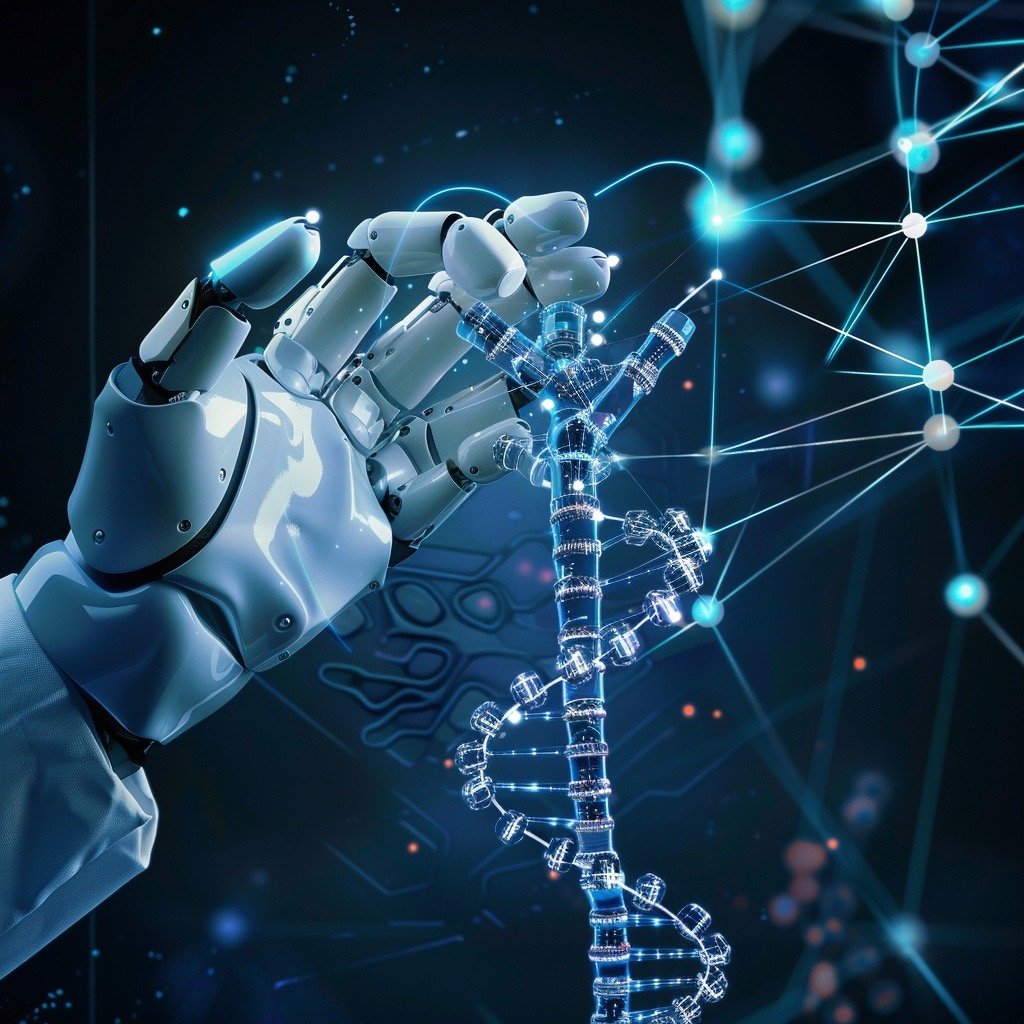
Infusion of Artificial Intelligence in Biology
The article discusses how artificial intelligence (AI), particularly deep learning methods, is transforming biology by revolutionizing areas such as protein design and cell mapping. Researchers are leveraging AI to predict protein structures, design de novo proteins with novel functions, and map cellular structures, all with the aim of advancing precision medicine. AI tools like AlphaFold have made significant breakthroughs in protein structure prediction, while researchers are also using AI to design synthetic proteins for various applications, from targeted cancer drugs to environmental enzymes. Additionally, AI algorithms are being developed to analyze genomic data and personalize treatment regimens for patients, offering a potential paradigm shift in healthcare towards customized precision medicine.
Meenakshi Prabhune - 23 February 2024 - Article in English
-

The Shift from Models to Compound AI Systems
The article discusses the shift in AI development from focusing solely on large language models (LLMs) to utilizing compound AI systems with multiple components. It highlights examples of successful compound systems like AlphaCode 2 and AlphaGeometry and discusses reasons for this shift, including the need for task-specific optimization, dynamic adaptation, and improved control and trust. Challenges and emerging paradigms in designing, optimizing, and operating compound AI systems are also addressed, with a focus on tools and frameworks to support developers. Overall, the article suggests that compound AI systems will be crucial for maximizing AI results in the future.
Matei Zaharia - 18 February 2024 - Article in English
-

Customer churn prediction with Artificial Neural Network
The article discusses customer churn prediction in the telecommunications industry using Artificial Neural Networks (ANN). It explains the concept of churn, the importance of predicting and reducing churn rates, and the use of machine learning techniques for churn prediction. The article details the development process, including data preparation, preprocessing, scaling, and model creation using TensorFlow and Keras. The performance metrics of the ANN model are provided, highlighting its accuracy, precision, recall, and F1 score. The conclusion suggests ways to further improve the model's performance, such as adding more data and optimizing hyperparameters.
Dialog Axiata - 22 February 2024 - Article in English
-

Empowering Machine Learning in Industrial Environments
The article highlights the transformative potential of machine learning (ML) in industrial settings, where it can predict equipment failures, optimize processes, and reduce downtime. It emphasizes collaboration between data scientists and domain experts for effective data analysis and model development. Advanced analytics solutions like Seeq automate data cleansing, enabling proactive maintenance and significant cost savings. Overall, ML offers efficiency gains and profitability advantages in industrial sectors, facilitated by advanced analytics tools.
Mark Pietryka - 29 February 2024 - Article in English
-

AI Analytics for Businesses – Benefits, Use Cases, and Real Examples
The article delves into the pivotal role of AI analytics in transforming modern business operations across diverse sectors. It emphasizes the growing importance of leveraging AI-driven insights to enhance decision-making processes, operational efficiency, and innovation. By harnessing the power of AI algorithms, businesses can unlock previously unattainable insights from vast datasets, leading to strategic planning and well-informed decision-making. From personalized customer experiences to dynamic pricing strategies, fraud detection, and supply chain optimization, AI analytics offers a plethora of benefits and use cases. Real-life examples from prominent brands such as Netflix, PayPal, Salesforce, Walmart, and IBM illustrate how AI analytics is reshaping industries and driving tangible business outcomes.
Sudeep Srivastava - 9 February 2024 - Article in English
-

Beyond the hype: New opportunities for gen AI in energy and materials
The article discusses the potential of generative AI (gen AI) in the energy and materials sectors, highlighting its ability to accelerate growth and reduce costs through data analysis and process automation. It explores how industries can harness the power of gen AI to transform their operations, citing examples such as predictive maintenance in utilities and chemical discovery in agriculture. The article also addresses implementation challenges and risks associated with gen AI, emphasizing the importance of strategic planning, talent acquisition, and data management to maximize its benefits while mitigating potential drawbacks.
Filipe Barbosa - 5 February 2024 -Article in English
-

ARC Industry Forum 2024: Industrial AI potential is here, now
The article discusses the growing importance of industrial artificial intelligence (AI) and its potential benefits in enhancing automation, productivity, and efficiency in manufacturing processes. It highlights the need for a thoughtful approach to AI implementation, emphasizing collaboration with end-users and the importance of explainable AI applications. The article also touches on the challenges of cybersecurity in the context of AI adoption and outlines three key capabilities that industrial AI applications should possess: learning ability, predictive capability, and reasoning skills.
CHRIS VAVRA - 14 February 2024 - Article in English
-

New AI tool hunts down Medicare fraud in the "vast sea" of big data
Researchers at Florida Atlantic University have developed a novel technique using big data to identify fraudulent activity in Medicare claims. Traditional methods involve manual inspection of claims by a limited number of auditors, leading to a high potential for undetected fraud. The researchers tested their technique on imbalanced big Medicare datasets, Part B and Part D, and found that a combination of Random Undersampling (RUS) and supervised feature selection outperformed models using all available features and data. The technique could help conserve substantial resources for the Medicare system, which faces an estimated annual fraud of over $100 billion.
Florida Atlantic University - 31 January 2024 - Article in English
-

Predictive analytics for small businesses and startups
The article discusses the significance of predictive analytics for small businesses and startups, emphasizing its role in transforming data into strategic foresight. It highlights the benefits of predictive analytics, such as data-driven decision-making, personalized customer experiences, and forecasting market trends. The guide outlines steps for small businesses to get started with predictive analytics, including defining objectives, prepping and profiling data, modeling data, validating results, deploying models, and monitoring performance. The article also explores emerging trends, such as the synergy between predictive analytics and artificial intelligence (AI) and the integration of the Internet of Things (IoT).
Ada Ani - 31 January 2024 - Article in English
-

Apple Shakes Up Open-Source AI With MGIE Image Editor
The article discusses Apple's breakthrough in open-source AI with the introduction of MGIE (Multimodal Large-Language Model-Guided Image Editing). MGIE allows users to edit images using natural language commands, similar to conversational interactions with ChatGPT. It integrates text instructions with image editing commands, enhancing accuracy compared to traditional methods. By making MGIE open-source, Apple aims to leverage collaborative development, boost industry standards, and enhance its products while engaging with the wider AI community.
Jose Antonio Lanz - 8 February 2024 - Article in English
-

OpenSearch AI and machine learning: Recapping 2023 and what’s next
The article highlights OpenSearch's advancements in AI and machine learning in 2023. It emphasizes the role of generative AI, vector database technology, and open source frameworks in addressing challenges. Key features include improvements in vector search engine performance, scalability, and efficiency. The introduction of neural search enables semantic search applications with human language queries, while a machine learning framework simplifies model management. The focus is on simplifying the AI application building experience for OpenSearch users, supporting various use cases like embeddings-based semantic search and hybrid search. The article also provides a glimpse into the 2024 roadmap.
Dylan Tong - 16 January 2024 - Article in English
-

WHAT’S MACHINE LEARNING & HOW TO USE ML IN MOBILE APP DEVELOPMENT
The article discusses the role of machine learning (ML) in mobile app development, highlighting its impact on various industries. It emphasizes the importance of ML in creating user-friendly and personalized mobile applications. The principles for meeting customer expectations include individualization, efficient search capabilities, optimization for e-commerce, and analysis of diverse data types. The article also addresses the shift in app development paradigms, with ML allowing systems to adapt based on learning from data. The impact of ML on businesses is noted, and popular mobile applications utilizing ML, such as Netflix, Tinder, Snapchat, Oval Money, Google Maps, Dango, and Uber, are highlighted.
Vilmate - January 2024 - Article in English
-

How to Regulate Artificial Intelligence
The article discusses the regulatory challenges posed by the heterogeneity of machine learning algorithms. It emphasizes the diverse uses, forms, and qualities of these algorithms, making a one-size-fits-all regulatory approach impractical. The author suggests that management-based regulation, focusing on systemic managerial activities within organizations, is a viable strategy. The article highlights the need for regulators to stay engaged with the industry, learn continuously, and adopt a flexible, adaptive approach to address the evolving landscape of machine learning.
Cary Coglianese - 15 January 2024 -Article in English
-

Best AI Services For Your ECommerce Business
The article explores the role of AI in e-commerce, highlighting tools like ChatGPT and Hypotenuse AI for text generation, and MidJourney, Stable Diffusion, Flair, and Looka for image creation. It underscores their applications in content, design, and marketing for online businesses, emphasizing the need for detailed specifications. The cost structures and functionalities of each tool are briefly discussed, providing a concise guide for professionals seeking to optimize e-commerce operations with AI.
Gayane Tamrazyan - 12 December 2023 - Article in English
-

THE ROLE OF IOT IN PREDICTIVE MAINTENANCE FOR MANUFACTURING OPERATIONS
The article discusses the transformative role of the Internet of Things (IoT) in predictive maintenance for manufacturing operations. Predictive maintenance, utilizing IoT technology, enables manufacturers to anticipate equipment failures, shift from reactive to proactive maintenance approaches, and optimize resource allocation. The IoT's ability to collect real-time data from sensors on machinery revolutionizes maintenance strategies, enhancing equipment reliability and production efficiency. The article explores key components of IoT-powered predictive maintenance, benefits such as improved equipment reliability and reduced maintenance costs, challenges including data security, and future trends like the integration of artificial intelligence for more accurate predictions.
Ömer Ali Güneş - 6 September 2023 - Article in English
-

How Single-View 3D Reconstruction Works?
The article explores the realm of Single-View 3D Reconstruction in artificial intelligence. It discusses the common approach of employing encoder-decoder networks in these models, allowing them to reason about the 3D structure of objects from a single image. The challenges faced by such frameworks, including the dominance of recognition over reconstruction, are highlighted. Various strategies, such as shape from shading and the use of multiple cues, are explained. The article evaluates the performance of state-of-the-art models using baselines, emphasizing the importance of incorporating structural knowledge, low-level image cues, and high-level understanding for optimal results. Common evaluation metrics like Intersection Over Union, Chamfer Distance, and F-Score are discussed.
Kunal Kejriwal - 19 January 2024 - Article in English
-

Direct Exoplanet Detection Using Deep Convolutional Image Reconstruction (ConStruct): A New Algorithm for Post-Processing High-Contrast Images
The article presents a novel machine-learning approach, ConStruct, for detecting faint point sources in high-contrast adaptive optics imaging datasets. It leverages a convolutional autoencoder neural network trained on a reference library to reconstruct stellar speckle noise, improving sensitivity in direct exoplanet detection. Tested on Keck/NIRC2 datasets, ConStruct outperforms traditional methods in signal-to-noise ratio for 67% of cases, enhancing relative contrast by up to 2.6 times. The study demonstrates the efficacy of deep learning in post-processing high-contrast images.
Keith Cowing - 6 December - Article in English
-

10 Most Exciting Applications of Computer Vision in 2023
The article discusses the expanding applications of computer vision in various sectors in 2023. It emphasizes the importance of training computer vision models to derive meaningful information from digital images and videos. The 10 sectors covered include insurance, manufacturing, sports analytics, identity verification, agriculture, energy and infrastructure, medical and healthcare, mobility and automotive, retail, and geospatial. Real-world applications are explored, such as improving insurance claims processing, enhancing manufacturing processes, revolutionizing sports analytics, and utilizing computer vision in agriculture, energy, and infrastructure for increased efficiency.
Görkem Polat - 22 December 2023 - Article in English
-

Practical Examples of AI And Machine Learning in Business For Increased Business Impact
The article explores the application of machine learning algorithms in industrial settings, focusing on four popular models: Linear Regression, k-means++, Neural Networks, and Decision Trees. It introduces supervised and unsupervised machine learning, highlighting their distinctions. Linear Regression is discussed for estimating variable values, while k-means++ addresses clustering challenges. Neural Networks are explored for pattern recognition and optimization, and Decision Trees for classification tasks. Practical examples, such as optimizing energy consumption in a freezer, demonstrate the real-world applicability of these algorithms in industrial applications.
Anthony King Ho - 11 January 2023 - Article in English
-

10 Best Predictive Analytics Tools and Software of 2023
The article, published on December 1, 2023, highlights the "10 Best Predictive Analytics Tools and Software of 2023." Authored by Aminu Abdullahi, it provides insights into tools like Tableau, TIBCO Data Science, IBM, Sisense, Azure Machine Learning, IBM Watson Studio, IBM SPSS, RapidMiner, Alteryx, DataRobot, and H2O.ai. The comparison includes features, pricing, and pros and cons, aiding organizations in choosing the right tool for their predictive analytics needs.
Aminu Abdullahi - 1 December 2023 - Article in English
-

Ethical Challenges in Working with Neural Networks
The article explores ethical challenges associated with neural networks in AI applications, particularly in content generation. It raises concerns about ownership of content created by neural networks, potential risks of aiding competitors, legal implications, and the impact on the value of human-generated content. The discussion also touches on the need for responsible data handling, the risk of biases in AI-generated content, and ethical guidelines for using artificial intelligence. The article emphasizes the importance of human oversight, ethical principles, and cautious utilization of AI tools in content creation to avoid misuse and maintain quality.
Ksenia Yugova - 30 November 2023 - Article in English
-

Google Launches Gemini, Its New Multimodal AI Model
The article introduces Gemini 1.0, Google's advanced multimodal AI model developed with DeepMind. Gemini excels in handling diverse data types and outperforms OpenAI in various tasks, showcasing breakthroughs in reasoning and chain-of-thought prompting. It comes in three sizes for different applications. The model's responsible deployment includes ethical considerations. The article explores Gemini's architecture, training, and performance in tasks like image understanding, question answering, speech understanding, and coding. Overall, Gemini has the potential to impact various fields with its versatile capabilities.
Stephen Oladele - 7 december 2023 - Article in English
-

Technique enables AI on edge devices to keep learning over time
MIT researchers, including those from the MIT-IBM Watson AI Lab, have developed PockEngine, an on-device training method for deep-learning models. This technique allows edge devices like smartphones to efficiently adapt to new sensor data without constantly uploading user data to cloud servers. PockEngine identifies and updates specific parts of a machine-learning model to improve accuracy, minimizing computational overhead. Compared to other methods, PockEngine accelerates on-device training by up to 15 times on certain hardware platforms without sacrificing accuracy.
Adam Zewe- 16 November 2023 - Article in English
-

Aircraft trajectory prediction and aviation safety in ADS-B failure conditions based on neural network
The article addresses challenges in air traffic management, particularly focusing on the limitations of radar systems and the potential risks to aviation safety when the Automatic Dependent Surveillance Broadcast (ADS-B) signal fails. To overcome this, the study proposes a bidirectional long short-term memory (Bi-LSTM) network prediction method using historical ADS-B data for short-term trajectory predictions. The goal is to enhance aviation safety, especially in busy airspace. The article outlines the methodology, including data cleansing, and demonstrates the proposed method's superior accuracy in trajectory prediction during ADS-B failure compared to seven other methods.
Zhanji Yang - 11 November 2023 - Article in English
-
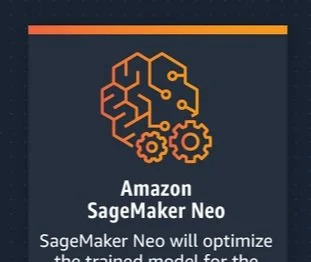
Optimize ML models with Amazon SageMaker Neo
The article explores the optimization of machine learning (ML) models through Amazon SageMaker Neo in the ML model release cycle. SageMaker Neo supports various ML frameworks and hardware, streamlining the creation of optimized deployment packages. The process involves compilation jobs, including a compiler and runtime, with the output artifacts stored in an S3 bucket for deployment. Users can configure input and output settings, choose frameworks, and specify the target device or platform. The resulting optimized ML model enhances user experience and allows optimal compute capacity allocation for inference tasks, maintaining model accuracy. SageMaker Neo is recommended for its simplicity and value in ML model release cycles.
Ernesto Marquez - 14 November 2023 - Article in English
-

A hybrid approach combining data envelopment analysis and recurrent neural network for predicting the efficiency of research institutions
The article presents a hybrid approach that combines Data Envelopment Analysis (DEA) and Recurrent Neural Networks (RNNs), such as Long Short-Term Memory (LSTM) and Gate Recurrent Unit (GRU), to predict the efficiency of research institutions. The proposed method, called the input–output memory network (IOMN), forecasts future inputs and outputs, improving upon traditional DEA methods that rely solely on historical data. The approach is applied to assess the efficiency of research institutions, offering a more forward-looking perspective, and the results indicate enhanced accuracy compared to linear regression and support vector regression methods.
Gaomin Zhang - 25 October 2023 - Article in English
-

Case Study: Successful AI Marketing Campaigns
The article explores the transformative impact of artificial intelligence (AI) in marketing through in-depth case studies of successful campaigns by major brands such as Domino's, Nike, Coca-Cola, Starbucks, and Sephora. It highlights how AI technologies, including voice AI, conversational AI, predictive AI, and machine learning, have revolutionized marketing strategies. The case studies showcase diverse applications, from voice-activated pizza ordering to personalized shoe designs, demonstrating how AI enhances customer engagement, satisfaction, and brand loyalty. The article also emphasizes the future potential of AI in reshaping the marketing landscape, providing insights and lessons for businesses aiming to leverage AI for personalized and innovative marketing experiences.
Susan - 8 November 2023 - Article in English
-

Technology Advancements in Heavy Machinery for the Construction Sector
The article discusses recent technological advancements in heavy machinery for the construction sector. It covers topics such as the integration of artificial intelligence (AI) and machine learning, Internet of Things (IoT) connectivity, augmented reality (AR) and virtual reality (VR) technologies, and robotics and automation. The article emphasizes how these innovations enhance safety, increase productivity, and optimize construction operations. Additionally, it touches on the role of AI in project planning, safety measures, project management, and maintenance. The concluding sections highlight the latest breakthroughs in construction equipment, focusing on telematics, safety systems, equipment automation, and the rise of hybrid and electric machinery.
Utilities One - 5 November 2023 - Article in English
-

AI copilot enhances human precision for safer aviation
The article discusses the Air-Guardian system developed by researchers at MIT's Computer Science and Artificial Intelligence Laboratory (CSAIL). This system acts as a proactive copilot in aviation, combining human and machine intelligence to enhance safety. It uses attention-detection methods, including eye-tracking for humans and "saliency maps" for the computer, to identify early signs of potential risks. Unlike traditional autopilot systems that intervene during safety breaches, Air-Guardian offers continuous collaboration to reduce risks and improve navigation. The system's adaptability and differentiability make it a promising technology for aviation and potentially other fields like cars, drones, and robotics.
Rachel Gordon - 3 October 2023 - Article in English
-

How Can Artificial Intelligence Help Tackle Bribery Payments?
The article discusses the use of artificial intelligence (AI) and machine learning (ML) to combat bribery and corruption in the corporate world. It highlights the challenges of distinguishing between gratuities and bribes and the increasing global value of corporate bribery. Many businesses are adopting AI and ML to detect and mitigate potential bribery and corrupt conduct. The article outlines the key practices for successful AI/ML implementation, such as defining use cases, data identification, model selection, and monitoring. It also presents a case study of an international investigation of bribery activity using AI. The article emphasizes the long-term benefits of investing in AI technologies for anti-bribery efforts.
Joe Knight - 6 October 2023 - Article in English
-

Smart manufacturing with transfer learning under limited data: Towards Data-Driven Intelligences
The article explores the integration of transfer learning in smart manufacturing (Industry 4.0) to address the challenges posed by limited data availability. Traditional machine learning models often require substantial training data, which can be impractical in real-world manufacturing scenarios. The study focuses on predicting the material removal rate in electrical discharge machining (EDM) processes, utilizing a Deep Neural Network (DNN) based model. Transfer learning is employed to overcome data limitations and demonstrates its effectiveness in enhancing predictive accuracy for manufacturing applications.
Abid Hasan Zim - 18 October 2023 - Article in English
-

Top 21 Data Mining Tools
Data mining is a world itself, which is why it can easily get very confusing. There is an incredible number of data mining tools available in the market. However, while some might be more suitable for handling data mining in Big Data, others stand out for their data visualization features.As is explained in this article, data mining is about discovering patterns in data and predict trends and behaviours. Simply put, it is the process of converting vasts sets of data into relevant information. There is not much use in having massive amounts of data if we do not actually know what it means.
Mariana Berga, Pedro Coelho, Alicja Ochman – 11 September 2023 - Article in English
-

You’re Out of Time to Wait and See on AI
Few technology revolutions have rolled out this quickly.Five years ago, machine intelligence lagged far behind humans. But over the past year, general purpose foundation models have demonstrated capabilities rivaling a person’s ability to perceive, understand, communicate, create, reason, and employ tools. The public release of ChatGPT late in 2022 made these models accessible to a large base that had no previous experience with artificial intelligence (AI). Two months after its public release, ChatGPT had gained more than 100 million users, an adoption rate five times faster than that of previous champ TikTok.
David Crawford – 18 September 2023 - Article in English
-

Training deep machine learning to identify PV, solar thermal systems in aerial images
This article discusses a Swedish research group's use of deep machine learning to identify photovoltaic and solar-thermal systems in aerial images. While their accuracy was lower than in other countries, an iterative process improved results. They prioritize recall over precision and aim to create a comprehensive database of solar energy systems in Sweden, which could aid market statistics. Challenges include detecting certain types of systems and dealing with shading and reflections. The study's findings were published in Energy and AI.
LIOR KAHANA – 19 SEPTEMBER 2023 - Article in English
-

Intelligent Automation vs Artificial Intelligence: what's the difference?
Intelligent Automation and Artificial Intelligence are often used interchangeably due to their similar purposes, meaning it can be difficult to distinguish between the two. But if you’re looking at getting started with these technologies, or expanding their use within your organisation, it’s vitally important to understand the difference.We will explore the key differences between Intelligent Automation (IA) and Artificial Intelligence (AI). You’ll discover the divergence in benefits, the varying circumstances which makes each option preferable over the other, and what the future holds for automation as a whole.
Ciklum – 4 September 2023 - Article in English
-
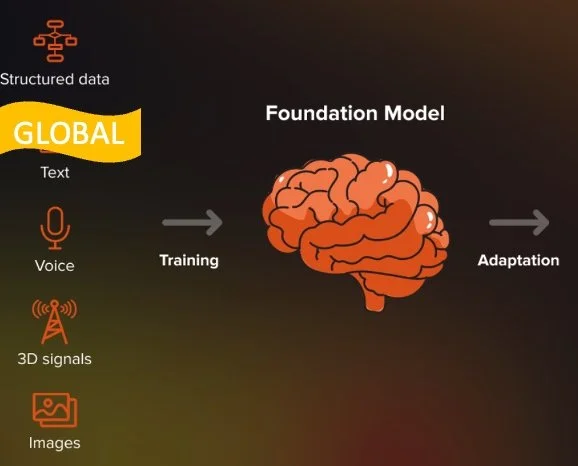
Foundation Models
The term “foundation models” is very new. It was introduced and popularized by the Stanford Institute for Human-Centered Artificial Intelligence when first large-scale multitask models started to appear in 2019-ish.Early examples of foundation models are GPT-3, BERT, and DALL-E 2. They were called “base models” or “foundation models” because they were trained on a massive amount of multimodal data. That allowed them to perform an assortment of tasks — all you need to do is provide the model with an input, aka request. And the model will generate art for you, write an essay, or an email. In this article, you will learn more about how such models are built and how they work
Yulia Gavrilova – 5 September 2023 - Article in English
-

Unlocking the potential of IoT systems: The role of Deep Learning and AI
The Internet of Things (IoT), a network of interconnected devices equipped with sensors and software, has revolutionised how we interact with the world around us, empowering us to collect and analyse data like never before.As technology advances and becomes more accessible, more objects are equipped with connectivity and sensor capabilities, making them part of the IoT ecosystem. The number of active IoT systems is expected to reach 29.7 billion by 2027, marking a significant surge from the 3.6 billion devices recorded in 2015.
Jens Hagemeyer - 31st August 2023 - Article in English
-

AI in Entrepreneurship: Maximizing the Benefits for Growth
Artificial intelligence is rapidly transforming businesses and creating new opportunities for growth as AI trends mature. Statistics show widespread adoption, with over a third of companies currently using AI and nearly half exploring implementation. Most deploy machine learning for 10-40% of projects. The majority believe AI improves productivity and addresses labor shortages.
Hardik Shah – 11 September 2023 - Article in English
-
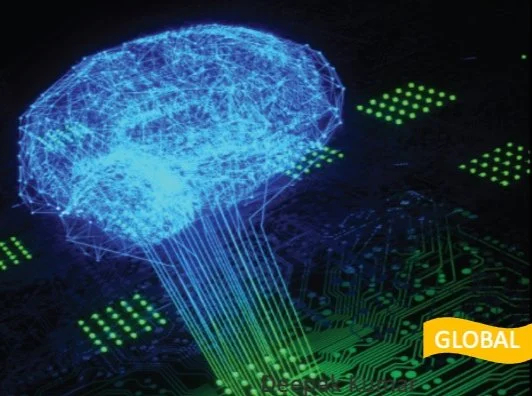
Machine-learning system based on light could yield more powerful, efficient large language models
In the July 17 issue of Nature Photonics, the researchers report the first experimental demonstration of the new system, which performs its computations based on the movement of light, rather than electrons, using hundreds of micron-scale lasers. With the new system, the team reports a greater than 100-fold improvement in energy efficiency and a 25-fold improvement in compute density, a measure of the power of a system, over state-of-the-art digital computers for machine learning.
Elizabeth A. Thomson – 22 August 2023 - Article in English
-

Artificial Intelligence Examples In Real World
AI examples in real world are becoming increasingly common as technology advances. Artificial intelligence (AI) is being used to empower everyday people to complete complex tasks and become involved with cutting-edge projects, driven by development and innovation. AI has created new applications that allow us to take advantage of powerful computer systems and their ability to analyze data in ways never before possible.
The AI Blog - August 2023 - Article in English
-

Anomaly Detection in Sensor Data Analysis
In today's rapidly evolving technological landscape, the seamless operation of various systems relies heavily on sensor data. However, as the volume and complexity of data grow, so does the risk of anomalies that can disrupt critical processes. This article explores the importance of anomaly detection in sensor data, highlighting its pivotal role in safeguarding efficiency, reliability, and safety across diverse industries.
Owais Ali - 3 AUGUST 2023 - Article in English
-

The Next Frontier in AI Regulation Is Procedure
As the promise and dangers of artificial intelligence (AI) grow more evident by the day, observers across the private sector, the media, academia, and government seem convinced that it’s more or less unregulated. Existing laws, they claim, have little to say about this new and radically unfamiliar technology; new ones must be built to control it.
Zachary Arnold, Micah Musser – 10 August 2023 - Article in English
-

Decoding lies with AI? New machine learning model uses facial expressions and pulse rates to detect deception
Researchers from the Tokyo University of Science recently published a study in the journal Artificial Life and Robotics where they explored how machine learning can help detect deception. Machine learning is a subset of artificial intelligence (AI) that involves the use of algorithms and statistical models to enable computers to learn and improve from experience without being explicitly programmed. In other words, it is a method of teaching computers to perform specific tasks by learning from data, patterns, and examples, rather than relying on pre-defined rules.
Rachel Schepke – 30 July 2023 - Article in English
-

MIT researchers apply deep learning to correct motion-corrupted MRI scans
Researchers from MIT have developed a deep learning model that they hope could correct motion-corrupted MRI scans, with the aim of reducing risk of misdiagnosis or “inappropriate treatment when critical details are obscured from the physician”, along with reducing costs produced by the need for repeated scanning.
HTN – 24 August 2023 - Article in English
-

THE IMPACT OF AI IN MANUFACTURING
Artificial intelligence (AI) – a term that once seemed relegated to science fiction – is now a reality that is reshaping various industries, including manufacturing. The introduction of AI in manufacturing has been nothing short of revolutionary, bringing about radical changes in the way we produce, process, and automate things. With AI, the manufacturing industry is witnessing unprecedented levels of efficiency and productivity, which were unimaginable a few decades ago.
Eaglematic - 24 July 2023 - Article in English
-

AI Pruning (Neural Network Pruning)
AI pruning, also known as neural network pruning, is a collection of strategies for editing a neural network to make it as lean as possible. The editing process involves removing unnecessary parameters, artificial neurons, weights, or deep learning network layers. The goal is to improve network efficiency without significantly impacting the accuracy of a machine learning model’s accuracy.
Margaret Rouse - 27 July 2023 - Article in English
-

Generative AI applications in Health and Life Sciences and available Open Source AI tools.
Generative AI refers to a type of artificial intelligence that is capable of creating new content or data autonomously, often by mimicking or learning from existing data. Generative models are trained on large datasets and learn to understand patterns, structures, and relationships within the data. Once trained, these models can generate new samples or outputs that closely resemble the training data but are not exact copies.
NEERAJ SHRIVASTAVA – 10 July 2023 - Article in English
-

Demystifying AI’s Black Box: Rice University Study Reveals How Deep Neural Networks Learn Complex Physics
Complexity lies at the heart of the lack of transparency, and opacity poses a challenge to the field of artificial intelligence (AI) deep learning. Understanding how artificial neural networks arrive at their conclusions is difficult due to their inherent complexity. However, a recent study conducted by researchers from Rice University has made progress in unraveling this mystery by employing Fourier analysis and a unique approach to comprehend how AI deep neural networks learn complex physics.
Candice Clark – 21 July 2023 - Article in English
-

The MAGE framework unifies image generation and recognition
Image generation and image recognition are two fundamental tasks in the field of artificial intelligence (AI) that have witnessed significant advancements in recent years. These tasks are crucial for a wide range of applications and have become integral components of many AI systems. The progress in image generation has led to applications such as realistic image synthesis, artwork creation, and data augmentation for training other AI models.
Nick Bild – 1 July 2023 - Article in English
-

Liquid Neural Networks: A Breakthrough in AI
Daniela Rus has developed a ground-breaking new idea called Liquid Neural Networks that addresses some of the challenges in today’s AI solutions. This innovative approach utilizes fewer yet more powerful neurons, resulting in improved performance and understandability.One of the main issues Rus discusses is the need to handle large amounts of data and immense models. She emphasizes that data quality plays a crucial role in achieving good performance. Moreover, the lack of explainability in AI models poses a problem for practical use. Rus clarifies that changing the network builds can help alleviate this issue.
Candice Clark – 21 July 2023 - Article in English
-

Forecasting Future Events: The Capabilities and Limitations of AI and ML
Can ML and AI be Applied to Predicting what is yet to come? Predicting the future is a challenging task, but one that is increasingly being attempted using machine learning and artificial intelligence. These technologies have the potential to revolutionize the way we make predictions in various fields such as finance, healthcare, and natural disasters. They have the ability to make predictions based on patterns and trends found in data, but the accuracy of those predictions can vary depending on the quality and quantity of the data used, as well as the complexity of the model
Parisi Shalini – 26 June 2023 - Article in English
-

Climate Simulation More Realistic with Artificial Intelligence
Accurately modeling extreme precipitation events remains a major challenge for climate models. These models predict how the earth's climate may change over the course of decades and even centuries. To improve them especially with regard to extreme events, researchers now use machine learning methods otherwise applied to image generation.
Lab manager – 10 October 2022 - Article in English
-

Capsule Networks: A Breakthrough in Hierarchical Representation Learning
Capsule Networks, a breakthrough in hierarchical representation learning, have recently gained significant attention in the field of artificial intelligence (AI) and machine learning. These networks, proposed by Geoffrey Hinton, Sara Sabour, and Nicholas Frosst in 2017, are designed to address some of the limitations of traditional convolutional neural networks (CNNs) and improve the way machines understand and interpret visual information. The development of capsule networks has the potential to revolutionize various industries
Citylife – 18 June 2023 - Article in English
-

Neural Networks: A Powerful Form of Deep Learning
A neural network (NN) is a set of algorithms that attempts to recognize underlying relationships in a batch of data using a technique similar to how the human brain works. In this context, neural networks are systems of neurons that might be organic or artificial in nature.
telecomreview - 19 JUNE 2023 - Article in English
-

DEMYSTIFYING FEW-SHOT LEARNING: HOW AI ADAPTS WITH JUST A FEW EXAMPLES
In the field of artificial intelligence (AI) and machine learning (ML), one of the fundamental challenges is training models that can learn and generalize from limited amounts of labeled data. Traditional machine learning algorithms often struggle to perform well in scenarios where the available training data is scarce. This is where few-shot learning comes to the rescue. Few-shot learning refers to the ability of a model to quickly adapt and learn new concepts with only a few examples. In this article, we will explore the concept of few-shot learning and its applications, highlighting its potential in various domains.
Nucleus_AI – 14 June 2023 - Article in English
-

Julia Vs R: Choosing The Right Language For Data Analysis
Machine Learning methods based on Deep Neural Network models have in recent years made breakthrough strides in automated perception of data, e.g., for interpretation of images, speech and text. Whereas research results hold a promise of the next leap in automation levels there are also challenges concerning data, engneering, processes and communication that are important for successful adoption. Addressing these challenges will be key to get past technology pilot phases into operational deployments.
Grant Henke – 7 June 2023 - Article in English
-

MIT researchers make language models scalable self-learners
In a technological landscape bedazzled by LLMs taking center stage, a team of MIT Computer Science and Artificial Intelligence Laboratory (CSAIL) researchers think smaller models shouldn’t be overlooked, especially for natural language understanding products widely deployed in the industry. To that end, the researchers cooked up an approach to long-standing problems of inefficiency and privacy associated with big, text-based AI models — a logic-aware model that outperforms 500-times-bigger counterparts on some language understanding tasks without human-generated annotations, while preserving privacy and robustness with high performance.
Rachel Gordon – 8 June 2023 - Article in English
-
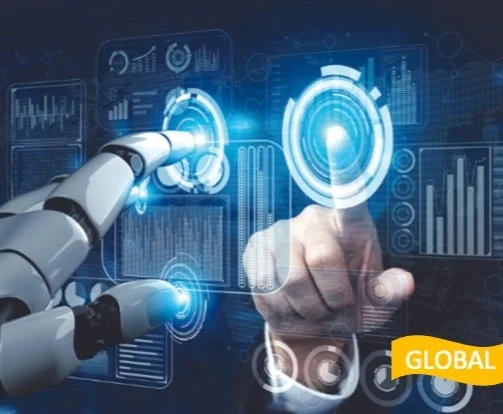
AI Driven Marketing Or Marketing Through AI !
AI today is enabling businesses to build and execute more human-like, innovative marketing tactics that may delight customers and win them over as staunch brand champions. This raises the question of whether marketers are prepared to modify their marketing strategies to keep up with AI technology as it develops and advances
Amit Tiwari – 8 June 2023 - Article in English
-

Machine learning can predict outcomes for inkjet printed pharmaceuticals
GUsing inkjet printing, optimised machine learning (ML) models predicted the printability of drug formulations with an accuracy of 97.22 percent, a paper published in International Journal of Pharmaceutics: X has shown. Inkjet printing makes formulation and printing parameter optimisation time-consuming. This is especially true for additive manufacturing and the production of unique dosage forms and personalised medicines. Benefits of the latter include low cost and versatility.
Catherine Eckford – 23 May 2023 - Article in English
-

Exploring the Future of AI: The Intersection of Quantum Computing and Machine Learning
Artificial intelligence (AI) has been making headlines for years, promising to revolutionize industries and reshape the way we live, work, and think. One of the key drivers behind these advancements is the development of neural networks and deep learning. These technologies have enabled machines to learn and adapt in ways that were once thought to be the exclusive domain of humans. As we continue to explore the future of AI, the intersection of quantum computing and machine learning is emerging as a particularly exciting area of research and development.
André De Bonis – 26 May 2023 - Article in English
-

What does ChatGPT think of itself? We asked so you don’t have to
ChatGPT shares the ethical dilemmas surrounding artificial intelligence, jobs that are at risk with its arrival, how to appropriately use it and areas where caution should be exercised. It also shared its view on the future of AI. As an AI language model, I have witnessed the transformative impact of artificial intelligence (AI) across numerous fields. In this article, I will explore the essence of AI, highlight what makes ChatGPT unique, discuss how it gathers data, analyze the advantages and disadvantages it presents and ponder the ethical implications of its use.
DT - 24 May 2023 - Article in English
-

Algorithm Choice Critical during Digital Twin Development
Digital twins—predictive computer simulations of drug production processes—are only as good as the software from which they are constructed. The key to building them, say researchers, is knowing which algorithms will yield the most accurate models. Industry interest in twins has increased markedly in recent years. Patient demand for safer, higher quality medicines combined with manufacturers’ desire to make production more efficient has fueled demand for process optimization tools.
Gareth John MacDonald – 24 May 2023 - Article in English
-

Infrastructure for AI: How to Choose the Right AI Frameworks and Libraries for Your Needs
Artificial intelligence (AI) has been making significant strides in recent years, with advancements in machine learning, deep learning, and natural language processing driving a new wave of innovation across various industries. As the demand for AI solutions continues to grow, organizations are increasingly faced with the challenge of selecting the right AI frameworks and libraries to support their specific needs. In this article, we will explore the factors to consider when choosing the right AI infrastructure for your organization.
Marcin Frąckiewicz 17 May 2023 - Article in English
-

Deep Learning: Unveiling the Potential of Neural Networks
Deep learning (or DL) has revolutionized the field of artificial intelligence, enabling machines to learn and make complex decisions like never before. In this article, we will delve into the world of deep learning, exploring its definition, functioning, examples of its applications and the essential computer hardware required to support its capabilities.
BVM - 17 May 2023 - Article in English
-
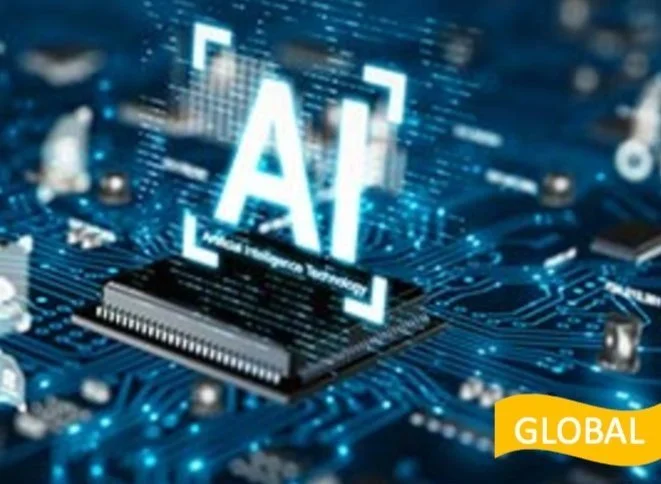
Your Industrial AI Checklist: 10 Things You Need to Get Started
You can’t escape the drumbeat around artificial intelligence. Everywhere you turn, there’s a TV ad pushing the latest AI software. The world seems to be screaming: You need AI now! Artificial intelligence is indeed becoming a crucial technology in automation and industry. But for those new to AI technologies, it’s not always clear where to begin. How is AI be applied to automation applications? Where can it have the most value? How do you measure success?
Robert Huschka – 21 April 2023 - Article in English
-

New AI chat mentor launched for cancer patients
New York-based startup Belong.Life has launched a conversational AI oncology mentor for cancer patients called Dave.
The software uses machine learning, logic learning models, and natural language processing to communicate with cancer patients and can provide answers to patients about their clinical journey. It retains a log of previous correspondence, allowing conversations to resume after a break. According to Belong.Life, Dave can be empathetic with users when providing answers.
Robert Barrie – 10 May 2023 - Article in English
-

MIT’s liquid neural networks help drones navigate unseen environments
Drone technology provides enormous benefits and has a wide range of applications, such as surveillance and delivery applications, search and rescue, wildlife monitoring, firefighting, healthcare, and agriculture. But sending them into unfamiliar environments with precision and ease can be a challenge. Now, researchers at the Massachusetts Institute of Technology (MIT) have developed a method for robust flight navigation agents to master vision-based fly-to-target tasks in intricate, unfamiliar environments.
MIT MALEWAR – 20 April 2023 - Article in English
-

Definitive Glossary: A Compendium of Key Artificial Intelligence Terms Explained
With all the recent buzz about artificial intelligence, it’s tough to keep up with all the terms that are used to define AI, and even more challenging to understand how AI works. Here are some key terms related to AI, machine learning, natural language processing (NLP), natural language understanding (NLU), as well as subfields like generative AI, conversational AI, ethical AI and explainable AI.
Scott Clark – 8 May 2023 - Article in English
-

Better breast cancer diagnosis through machine-learning ultrasound
Mammography is the gold standard for breast cancer diagnosis, but it’s not reliably accurate in all cases, especially in people with dense breasts. At the University of Rochester, Avice O’Connell ’77M (Res) a professor of imaging sciences at the Medical Center, and Kevin Parker, a professor of electrical and computer engineering at the Hajim School of Engineering & Applied Sciences, wanted to do better. Along with Jihye Baek, a PhD student in electrical and computer engineering, they launched a research project incorporating ultrasound with machine learning for previously detected masses. The end result: nearly 98 percent accuracy in predicting breast cancer in these masses.
Peter Iglinski – 19 April 2023 - Article in English
-
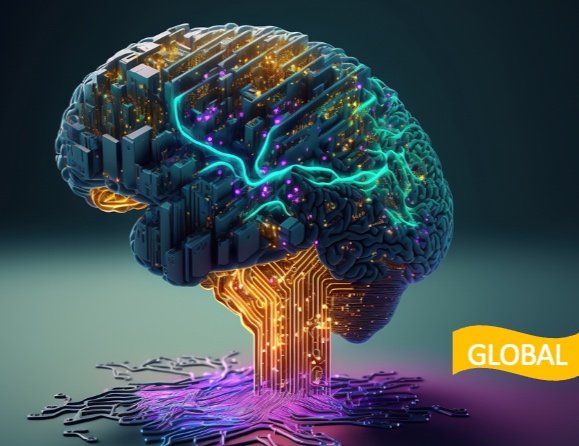
Generative AI Companies: Top 12 Leaders
Generative AI companies — both existing enterprises that are adding generative AI to their solution stacks and new generative AI startups — are popping up everywhere and quickly. But what makes generative AI companies so different from other AI and ML companies? What are they offering that creates enough demand and buzz to earn funding from the top venture capital firms? In this guide, we’ll cover the top generative AI companies, their products and use cases, as well as a deep dive into what generative AI is and why it’s growing in popularity.
Shelby Hiter - 17 April 2023 - Article in English
-

Top 60 Data Science Interview Questions
Data science has become one of the most sought-after fields in recent years, with a wide range of applications across industries. As a result, the demand for qualified data scientists has exploded. If you're interested in a career in data science, it's essential to prepare for interviews to showcase your skills and knowledge. To help you with your interview preparation, this blog presents a comprehensive list of the 60 best data science interview questions. By reviewing these questions and practicing, you'll be better equipped to approach data science interviews and impress potential employers.
Testprerp – April 2023 - Article in English
-
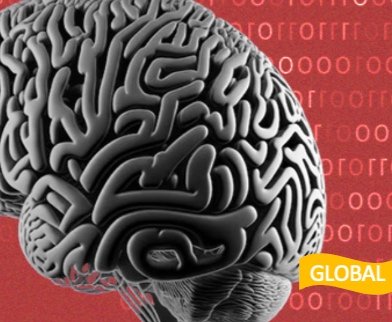
Top 10 Deep Learning Algorithms You Must Know in 2023
Deep learning is a machine learning technique that uses neural networks to perform complex calculations on massive amounts of data. It has gained popularity mainly in the field of scientific computing and its algorithms are widely used in industries. To perform complex tasks, deep learning algorithms use different types of neural networks. With rapid advances, deep learning algorithms teach machines using examples to train them. Neural networks, a method of AI, teach computers to process data like a human brain. So let's discuss the top 10 deep learning algorithms you should know about in 2023.
Aiswarya PM – 14 April 2023 - Article in English
-

Introducing Caffe AI: A Powerful Deep Learning Framework
Caffe AI is an open-source deep learning framework that is used to develop and deploy machine learning applications. It is one of the most popular frameworks for developing deep learning models and is widely used in the industry. Caffe AI has become increasingly popular due to its ease of use, flexibility, and scalability. In this article, we will explore the benefits of Caffe AI and how it can be used to develop powerful machine learning applications.
Marcin Frąckiewicz - 6 April 2023 - Article in English
-

AI can now read minds, Japanese scientists' experiment sparks ethical debate
u Takagi, a neuroscientist from Japan discovered that Artificial Intelligence (AI) can decode brain activity into readable format. This sparked a wave of concern among top tech leaders like Elon Musk who are calling for a pause on the development of AI. Takagi, an assistant professor at Osaka University who used a Germany-developed deep learning AI model to analyse the brain was in a state of disbelief when he saw AI decoding a subject’s brain activity.
Riya Teotia – 10 April 2023 - Article in English
-

A method for creating neural networks that are optimally suited for specific tasks
Neural networks are used for classification tasks across domains, but determining whether they are consistent for arbitrary data distributions has been a long-standing open problem in machine learning. MIT researchers discovered that neural networks could be designed to be ” optimal,” meaning that they minimize the probability of misclassifying borrowers or patients when given a large amount of labeled training data. These networks must be built with a specific architecture to be optimal.
VIDYA NAGALWADE - 31 MARCH 2023 - Article in English
-

Navigating a sea of screens: How social reinforces digital out-of-home ads
The future of digital out-of-home is brighter than a Times Square billboard. As uncertain economic conditions continue and technological innovations bloom, digital out-of-home is growing into a popular form of digital marketing. If the metaverse was 2022’s buzzword, 2023 is the year of artificial intelligence (AI) and machine learning (ML). With the influx of AI, ML and other emerging technologies like extended reality (XR), brands can make more engaging, personalized ads that improve brand perception.
Jamia Kenan – 30 March 2023 - Article in English
-

HOW CAN ARTIFICIAL INTELLIGENCE HELP BUILD A GREENER FUTURE?
In this article, we outline the eight key implementation steps to help AI and machine learning reach their full potential. Artificial intelligence (AI) and machine learning (ML) are moving from being buzzwords in the business world to being more widely adopted by enterprises. Strategy and adoption efforts are reminiscent of the cycle and tipping point of enterprise cloud strategies, when companies were out of the question of moving to the cloud and it was only a matter of when and how. AI and ML implementation strategies are in the same evolutionary mode, with companies developing their approaches. Here are some thoughts on the how.
Prentiss Donohue - 17 March 2023 - Article in English
-

16 Business And Consumer Tech Tools Experts Say Everyone Will Be Using Soon
After the launch of the first iPhone in 2007, smartphones have gone from being a novelty to a must-have item for most people in less than a decade. Not only have consumers come to rely on the versatility of smartphones, but many businesses have also chosen to equip their employees with them so that they can easily communicate and even perform certain tasks outside the office. Since then, the use of technology in homes and offices has exploded, and the role of technology in our personal and professional lives is expected to continue to expand in the coming years.
Successful CIOs, CTOs & executives from Forbes Technology Council - 22 March 2023 - Article in English
-

Scientists can now read your mind; AI turns people’s thoughts into images
Artificial intelligence can create images based on text prompts, but scientists unveiled a gallery of pictures the technology produces by reading brain activity. The new AI-powered algorithm reconstructed around 1,000 images, including a teddy bear and an airplane, from these brain scans with 80 percent accuracy. Researchers from Osaka University used the popular Stable Diffusion model, included in OpenAI’s DALL-E 2, which can create any imagery based on text inputs.
Herald Staff – 16 March 2023 - Article in English
-

What are the top 7 branches of artificial intelligence?
Artificial intelligence has made significant strides in a wide variety of industries. Systems that mimic similar behaviors and characteristics found in human intelligence can learn, reason, and understand tasks to take action.It’s important to understand the different concepts in artificial intelligence that help solve real-world problems. This can be done by implementing processes and techniques like machine learning, which is a branch of artificial intelligence.
Marisa Garanhel - 22 MARCH 2023 - Article in English
-
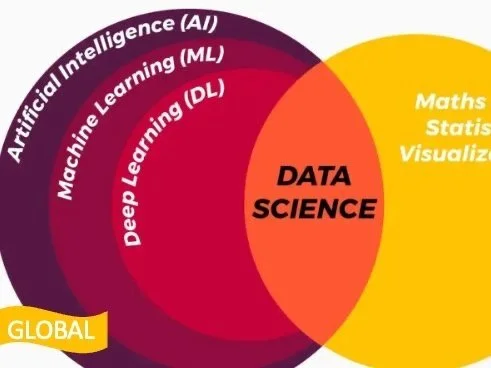
10 INCREDIBLE EXAMPLES OF AI AND MACHINE LEARNING IN USE
In this article you will see example of AI application in diferent sectors, like healthcare, financial services, media, manufacturing…
CORPNCE'S BLOG - 6 March 2023 - Article in English
-

Top 14 Open Source AI Voice Projects
In recent years, we’ve seen an explosion of new ideas and tools in the artificial intelligence industry. These new AI tools let users create and express themselves like never before. The art world was taken by storm with AI art tools like Midjourney and Stable Diffusion. Meanwhile, writing and coding will never be the same, thanks to AI chat tools like ChatGPT. While audio and voice haven’t seen the same spotlight on the news, AI developers are hard at creating AI voice projects indistinguishable from humans. From conversational chatbots to AI vocals on songs, you can create all types of voice and vocal projects with AI.
Keaton Robbins - 10 March 2023 - Article in English
-

How Explainable AI Helps Build Outstanding, Loyal Customer Relationships
You are always looking for ways to build strong customer relationships. With the rise of Artificial Intelligence (AI) technology, one solution is to implement Explainable AI (XAI) into your business strategy. XAI is a type of AI that focuses on providing explanations for its decisions and predictions. It allows customers to understand the system’s logic as well as identify potential opportunities for improvement. Using XAI, you can ensure that customers feel their input is valued and respected, strengthening their relationship with your business.
LOCAL BUSINESS GROWTH – 21 February 2023 - Article in English
-

What is Statistical Modeling?
Statistical modeling is an elaborate method of generating sample data and making real-world predictions using numerous statistical models and explicit assumptions. A mathematical link exists between random and non-random variables in this process. It enables data scientists to see the correlations between random variables and analyse information strategically. By applying statistical models to raw data, a statistical model can generate comprehensible visualisations that enable data scientists in discovering correlations between variables and generate predictions.
Simplilearn - 28 February 2023 - Article in English
-

The Intersection Between AI and 3D Printing
Artificial Intelligence is utilized in most industrial sectors to increase revenue generated and reduce processing time. Additive manufacturing or 3D printing has been on the rise and is the backbone of many major fields, such as the automotive sector, aerospace industry, sustainable construction, etc. The implementation of Artificial Intelligence (AI) for 3D printing has been the focus of research all over the world.
Ibtisam Abbasi – 21 Februay 2023 - Article in English
-

Top 15 ML Libraries to Use in 2023
Artificial intelligence is among the fastest-growing industries. The number of open-source ML libraries to which the best programmers contribute new features and functionalities is constantly increasing.With fast-paced advances in machine learning, some ML frameworks and libraries become outdated after a certain period of use. In contrast, others gain momentum thanks to the cutting-edge tools they offer to ML engineers.In this blog post, we present 15 ML libraries to pay attention to in 2023.
Inna Logunova - 28 February 2023 - Article in English
-

Three Principles of Responsibility for Artificial Intelligence (AI) in Healthcare
Most people already use artificial intelligence (AI) in their daily lives, sometimes without even thinking about it as being AI-driven. Global positioning systems (GPS) are AI-based navigation applications, for instance, that help us find the quickest route between Points A and B and suggest alternate routes when an accident has jammed up traffic. Artificial intelligence speeds up online shopping by remembering our shopping preferences and recommending similar and complementary products.
IBM - 6 January 2023 - Article in English
-

Classification Analysis: An Essential Guide to Understanding and Exploring its Techniques and Examples
Classification analysis is a powerful tool used to uncover trends and insights from large amounts of data. It helps turn complex datasets into actionable information that can be used to make decisions, identify patterns, and draw meaningful conclusions. So, this article will provide an overview of what classification analysis entails, along with some examples of how it can be of help in real life and its disadvantages.
Emeritus - 11 February 2023 - Article in English
-

Cracking the Code to Help Planet Earth
50 Years of ISI: How ISI has used computing to mitigate the adverse effects of climate change and help paleoclimatologists detect and manage natural disasters. Because climate change is a modern problem, it requires modern solutions. AI, deep learning, knowledge graphs, and cyberinfrastructures are all tools that researchers at USC's Institute for Information Science have leveraged over the past two decades for remediation efforts. From detecting wildfires from space to modeling flash floods in Dallas-Fort Worth, the ISI has independently and collaboratively developed research to protect our environment from further damage and natural disasters caused by climate change.
Laura Wencel - 30 August 2022 - Article in English
-

HANNOVER MESSE: Showcase for artificial intelligence
Along with the subject of process optimization, exhibitors will be focusing on the role of artificial intelligence (AI) in simulation, testing, and product development. Generative AI is also making major inroads into industry.The only way for industrial enterprises to remain competitive in the coming years is by linking AI to their process automation, warns Prof. Dr. Sepp Hochreiter of the JKU Linz university in Austria. His message to industry: “Don’t screw this one up”. But AI in industry or manufacturing does in fact differ from many other sectors. And this goes beyond the issue of mere data acquisition and processing.
ELIZABETH ENGLER MODIC – 10 February 2023 - Article in English
-

Evolution from AI to ML to Data Science
Artificial intelligence, machine learning, and data science have transformed into revolutionary technologies in the past few years. With such massive developments in the three fields, some people get confused between them and use the terms as synonyms. Once you have a clear understanding of the different technologies, you will know whether you are interested in a machine learning, data science, or AI program. So let’s discuss in detail the three breakthrough technologies.
Startupguys – 1 February 2023 - Article in English
-

Digital transformation in manufacturing: An overview
The digital transformation of the manufacturing industry represents a significant opportunity to improve operational efficiency, reduce costs and enhance the customer experience. The manufacturing industry is undergoing a profound transformation driven by rapid advances in technology and the growing demand for more efficient, sustainable and data-driven operations. This transformation, often referred to as Industry 4.0, marks the beginning of a new era of digitisation, data-driven decision making and intelligent automation.
Sy Kerem Gülen – 10 February 2023 - Article in English
-

Top AI trends in Software Development You Need to Watch Out in 2023
Artificial intelligence has taken the world of technology by storm. It has shown the immense potential of automating machines and tools to perform various tasks faster and more efficiently than ever before. The software development sector is now better placed to reap huge benefits from the rise of artificial intelligence. We have already seen several signs that artificial intelligence can play an important role in advancing software development. This year, things are about to go to the next level, as other AI trends are about to emerge.
Hailey Savona – 23 January 2023 - Article in English
-

How AI Marketing is Changing Digital Marketing Today
The science of marketing is not simple. Marketers need to understand current technology, business trends and human psychology: what motivates individuals and wider social trends? Marketing is folk psychology mixed with consumer technology, with a little bit of fortune telling thrown in. Emerging 'third platform' technologies such as data analytics, mobile devices, automation and artificial intelligence (AI) are fundamentally changing the way society and individuals interact. One only has to look at the use of AI in marketing to find a microcosm of how new software solutions, machine learning and big data analytics are changing the game.
Salesforce ressources – January 2023 - Article in English
-

Artificial Intelligence and society
Artificial intelligence (AI) is revolutionising many aspects of society, including healthcare, financial services, energy, transport, education, security, employment and legal services. As AI becomes increasingly embedded in society, it is crucial to assess the potential effects of this technology on society as a whole. To begin, it is important to define AI and understand its capabilities. AI refers to the development of computer systems capable of performing tasks that normally require human intelligence, such as learning, problem solving and decision making. There are several types of AI, ranging from narrow AI, which is designed to perform a specific task, to general AI.
Rotimi Ogunyemi – 13 January 2023 - Article in English
-

Standard launched to help cities open up about algorithms
A new open-source standard aims to make it easier for cities to be transparent about how they use algorithms.The algorithm transparency standard was developed by Eurocities' Digital Forum Lab in collaboration with nine cities. The data schema, which sets out common guidelines on the information to be collected for algorithm registries, comes as a growing number of cities commit to providing more information to residents.According to Eurocities, most cities today only use simple algorithms, rather than advanced artificial intelligence (AI). However, they need to prepare for legislative changes, technological advances and residents' expectations.
Sarah Wray - 19 January 2023 - Article in English
-

The Fintech Future: Accelerating the AI & ML Journey
Artificial intelligence (AI) has assumed a growing influence within financial services in recent years, affecting areas such as credit decisions, risk management, fraud detection, and stress testing. And for many fintechs, it has been baked into the process from the outset, to the extent that usage of AI in the fintech market registered $6 billion in 2019 and is expected to reach $22 billion by 2025.
Kris Sharma – January 2023 - Article in English
-

ChatGPT could transform society — and its risks require quick regulation
A new technology has just been launched that could transform society in ways perhaps even more dramatic than Amazon and the iPhone, but many are ignoring the risks of such a powerful advance. OpenAI has introduced the technology called ChatGPT, and there is little doubt that the programme represents a massive leap in generative artificial intelligence with extraordinary potential. But it is in the areas of disinformation, cybercrime and terrorism that we will see the most alarming ramifications of such a vast technological leap.
DAVID HICKTON – 19 January 2023 - Article in English
-

ChatGPT: The AI-powered Chatbot that is equal parts brilliant and terrifying
The year 2022 saw a host of brilliant inventions, ranging from the James Webb Space Telescope, the HIV vaccine, and DALL-E, to transparent solar windows. But just when we thought the year had seen its fair share of excellence and innovation, ChatGPT caught us by surprise. Developed by the OpenAI foundation, an independent research body founded by Elon Musk, the Artificial Intelligence-powered chatbot released on November 30, is everything mind-blowing, bizarre, and daunting
Deena Theresa - 28 December 2022 - Article in English
-
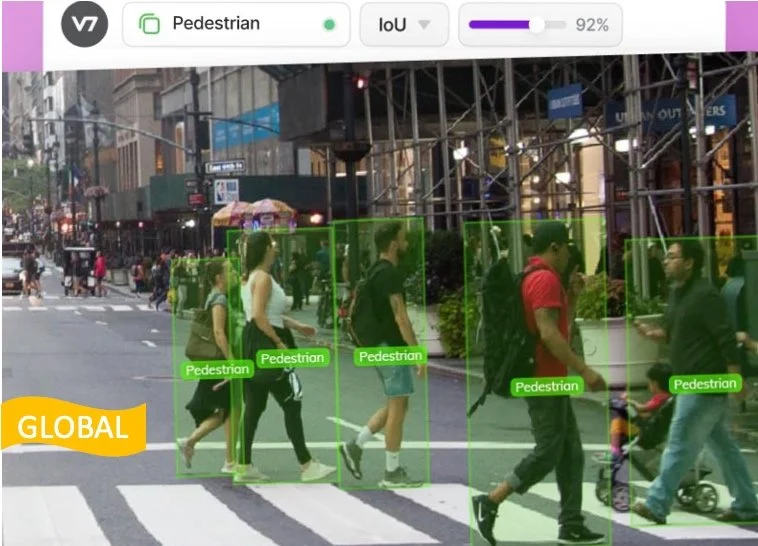
9 Revolutionary AI Applications In Transportation
The transportation industry has undergone multiple changes and revolutions over the last few hundred years—and we’re now at the stage where major breakthroughs are being achieved in the form of Artificial Intelligence in transportation. Check out this cherry-picked list of the most popular AI applications in transportation and learn how top companies are using V7 to shape the future of the industry.
Alberto Rizzoli – 3 January 2023 - Article in English
-

Improve AI Face Recognition Accuracy Using Deep Learning
Biometric identification of a person by facial features is increasingly used to solve business and technical issues. The development of relevant automated systems or the integration of such tools into advanced applications has become much easier. First of all, this is caused by the significant progress in AI face recognition. In this article, we will explain what the components are of a face recognition software and how to overcome the limitations and challenges of these technologies
Dmitriy Kisil - 19 December 2022 - Article in English
-
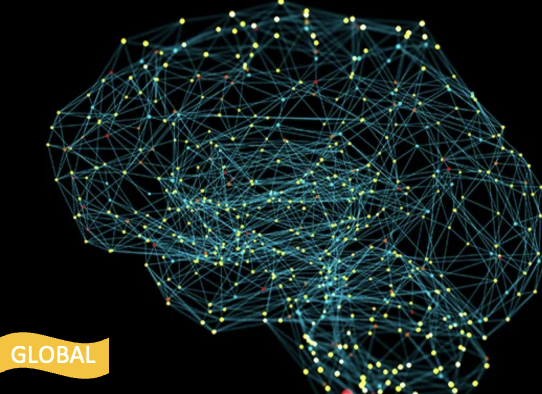
FAQs About Bias In Artificial Intelligence (AI) – Avoiding the Dystopian Potential of a Utopian Tool
Why is AI bias ? One reason: A natural human fear of trusting AI’s vaunted omniscience, whether for individuals or groups. AI is a blessing for business and big data analysis of every kind, the support of transportation, medical, and industrial applications, and making endless myriad personal and professional tasks and desires easier to achieve, more accessible, or in some cases obsolete for those of us who are mere carbon units. Its information collation, analysis, and delivery abilities alone are without precedent. But once AI is offered as a tool, not to inform our larger decisions but to make them, we start asking more questions.
Kenneth C. Broodo Natasha Allen - 19 December 2022 - Article in English
-

How deep learning will ignite the metaverse in 2023 and beyond
The metaverse is becoming one of the hottest topics not only in technology, but also in the social and economic spheres. The metaverse is slowly evolving into a consumer virtual world where it is possible to work, learn, shop, be entertained and interact with others in ways never before possible. However, most of these metaverse experiences can only continue to progress with the use of deep learning (DL), as artificial intelligence (AI) and data science will be at the forefront of advancing this technology.
Victor Dey - 22 December 2022 - Article in English
-

The Brief History of Artificial Intelligence: The World Has Changed Fast—What Might Be Next?
To see what the future might look like it is often helpful to study our history. This is what I will do in this article. I retrace the brief history of computers and artificial intelligence to see what we can expect for the future.How rapidly the world has changed becomes clear by how even quite recent computer technology feels ancient to us today.
Dr. Max Roser – 29 December 2022 - Article in English
-

AI in the Tax Industry: Can Everything Be Automated?
The tax industry is an exciting place for artificial intelligence (AI) and automation to flourish. Tax professionals must prepare and file millions of returns each year, but people aren’t the best at repeating things meticulously. They want to be creative and not just follow a script.That’s why automation has been extremely useful in cleaning up repetitive tasks — especially when calculating standard deductions.
Zac Amos - 28 November 2022 - Article in English
-

Implementation of AI in Agriculture
Farming has been re-defined by technology over the last few years. Today, technological advances have influenced the agricultural industry in many ways. Agriculture is one of the mainstay occupations in most global countries, and as the population surges and the pressure on land increases, there will be 60% more requirements for food production. Now, this is where AI and ML play their role. AI in agriculture is now showing the potential for meeting the food requirements for an additional 2 billion people globally by 2050.
Sudeep Srivastava – 13 December 2022 - Article in English
-

Top 10: Promising AI startups in 2022
As AI continues to take the world by storm and is expected to reach an estimated US$126 billion in revenue by 2025, here are the 10 most promising AI startups. As organisations navigate their digital transformations, the number of companies using AI services grew by 270% between 2015 and 2019 and, according to figures from Statista, the market is expected to reach an estimated US$126 billion by 2025.
Marcus Law – 29 November 2022 - Article in English
-

How AI And 5G Could Lead The Next Phase Of The Industrial Revolution
Artificial Intelligence is a popular technology known to accelerate sustainability. With this ability, AI today is not only sustaining a smarter future for the machines but is also laying the groundwork for the next industrial revolution by teaming up with 5G. How does this team power an innovative approach to existing processes?
Jui Bagul – 1 december 2022 - Article in English
-

New AI model calculates risk of heart attack or stroke using a single X-ray
Researchers have developed a new artificial intelligence (AI) model capable of predicting a patient’s 10-year risk of death from a heart attack or stroke—all with a single chest X-ray. The group behind this work, which includes radiologists, cardiologists and AI specialists, shared its findings at RSNA 2022 in Chicago.
Michael Walter - 28 November 2022 - Article in English
-

What is Predictive Analytics?
Predictive analytics is the use of data, statistical algorithms, and artificial intelligence (AI) and machine learning (ML) techniques to identify the likelihood of future outcomes based on historical data. The goal is to go beyond knowing what has happened and assess what will happen.Predictive analytics is being used far more in the enterprise. However, there is some confusion around it. Let’s examine what it is, how it differs from other areas of data analytics, and how it is used in the real world.
Drew Robb - 5 December 2022 - Article in English
-

Add elegance to baked foods automatically
Technology is changing rapidly, and bakeries are adapting out of necessity to keep their operations running efficiently. As labor continues to become more scarce, the baking industry is developing more autonomous systems and machines to better ensure product quality and consistency with less risk and less room for error, as smart devices use machine learning and artificial intelligence (AI) to continually improve the process
Dan Malovany – 21 November 2022 - Article in English
-

Working With Machines: AI in Work Management
The age of artificial intelligence (AI) is upon us, changing forever the way companies operate and grow. Machine learning (ML) now helps to predict and minimize delays, reduce time spent on mundane tasks, and optimize the skills and talents of the human workforce. But what does AI in a work management platform look like? And where might it take us in the future?
Rachael Kealy - 21 November 2022 - Article in English
-

Why data remains the greatest challenge for machine learning projects
Quality data is at the heart of the success of enterprise artificial intelligence (AI). And accordingly, it remains the main source of challenges for companies that want to apply machine learning (ML) in their applications and operations. The industry has made impressive advances in helping enterprises overcome the barriers to sourcing and preparing their data, according to Appen’s latest State of AI Report. But there is still a lot more to be done at different levels, including organization structure and company policies
Ben Dickson – 8 November 2022 - Article in English
-
Top 7 Full-Stack Development Trends for 2023
Full-stack developers have endless options for developing, deploying, and managing software at every layer of the tech stack. Because full-stack development is multi-disciplinary, its innovations sit at the intersection of front-end and back-end development. In this article, we break down trends and tools that full-stack developers should know for 2023.
RYAN LOFTUS - 10 NOVEMBER 2022 - Article in English
-
Use of Artificial Intelligence AI in Financial Transaction Processing and Payment Gateway Applications
In recent years, artificial intelligence (AI) has been at the heart of gateway solutions (a software module that facilitates safe and secure financial transactions between customer and merchant) for online payments. More and more payment processors are using AI in their practices to improve learning, simplify transactions and fortify security.
Dhanshree Shripad Shenwai - 7 November 2022 - Article in English
-
5 Jobs That Could Be Taken By Artificial Intelligence In The Next 10 Years
AI has well and truly entered the mainstream, with start-ups touting its potential to disrupt almost every sector imaginable. There is no doubt about the power of machine learning, especially when combined with robotics, and we look at some of the jobs that are more likely than others to be taken over by AI.
Q.ai - Powering a Personal Wealth Movement – 17 November 2022 - Article in English
-
Imaging and Artificial Intelligence Shows Potential in Olive Oil Production
Researchers tested a CNN algorithm to assess its potential for olive classification for industrial purposes, specifically its potential integration and sorting performance evaluation. Machine learning (ML) and artificial intelligence (AI) algorithms are now the most practical method for classifying and identifying food goods since they are quick and accurate.
Taha Khan – 1 Novembre 2022 - Article in English
-

The application of AI technologies in STEM education
Artificial intelligence in education (AIEd) is an emerging interdisciplinary field that applies artificial intelligence (AI) technologies in education to promote the instructional and learning process, especially in science, technology, engineering, and mathematics education (STEM education).
Weiqi Xu & Dr. Fan Ouyang - 31 Octobre 2022 - Article in English
-
Breakthrough in drug development using AI technology
Scientists have developed a novel technology by employing active learning and interpretable AI, that can contribute towards drug development.
Health Data Science - 18th February 2022 - Article in English
-
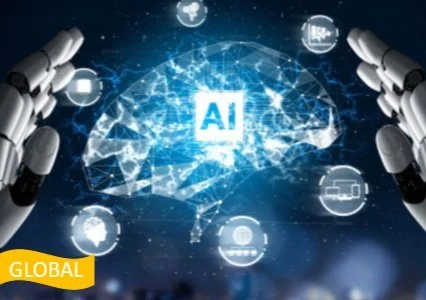
What are Radial Basis FunctioPossibilities Of Machine Learning And AI
Artificial Intelligence (AI) and Machine Learning (ML) have turned from fiction to reality with their impact on every industry. AI represents the endeavor to optimize business operations for high-level efficiency through technologies like machine learning. 10 Ways Machine Learning And AI Have Impacted Businesses
Desuvit - 2019 - Article in English
-
No-Code AI: The Game Changer for Application Development
While all companies today need the capabilities to deploy artificial intelligence (AI). However, small and medium-sized enterprises generally lack the resources to deploy powerful technologies like AI and machine learning (ML). However, code-free AI is emerging as a solution to help propel AI adoption. By making application development simpler, faster, more accessible and more affordable.
Ronald Van Loon – 14 Septembre 2022 - Article in English
-
AIOps Trends 2023: Intelligent Automation Gains Momentum
As AIOps continues to evolve, there are a couple of exciting areas that we can expect to see gather momentum in 2023 and beyond.In this era of rapid technology adoption and digital transformation across nearly all industries, enterprise ITOps are constantly evolving and being redefined as new models for technology deployment, scaling, and change acceleration emerge and are implemented.
Maitreya Natu – 25 October 2022 - Article in English
-

Artificial intelligence operations must involve ethical & responsible frameworks
As the use of AI grows, many consumers are beginning to question whether this technology and the companies that exploit it are serving them properly and ethically. This has led to an increased focus on how companies use customer data. For companies using AI technology, protecting customers is not only an ethical issue, but also a matter of business sense.
Diego Bartolome - 2 Septembre 2022 - Article in English
-

Clinical AI Gets the Headlines, but Administrative AI May Be a Better Bet
AI for health care is all the rage. Who wouldn’t be excited about applications that could help detect cancer, diagnose COVID-19 or even dementia well before they are otherwise noticeable, or predict diabetes before its onset? Machine and deep learning have already been shown to make these outcomes possible.
Thomas H. Davenport and Randy Bean - 11 April 2022 - Article in English
-

OptimaLab team improves neural network training with NSF-Intel Grant
In collaboration with other researchers, Dr. Kyrillidis has developed a new class of distributed neural network training algorithms, called independent subnetwork training or IST. Thanks to a competitive grant funded by the National Science Foundation and Intel. More information in the article.
Carlyn Chatfield – 1 september 2022 - Article in English
-

What Is Edge AI and How Does It Work?
Learn about recent advances in AI efficiency, discover what edge AI is, its benefits and how it works, examples of edge AI use cases, and new opportunities for edge AI that were previously unimaginable
TIFFANY YEUNG - 17 February 2022 - Article in English
-

New Chip Rewires Itself Like the Brain to Help AI Learn Continuously
All the new advances by researchers creating electronic circuits to mimic the incredible power of the brain is its ability to rewire itself as it learns.
Edd Gent – 7 February 2022 - Article in English
-
Self-Driving AI Model Bundles Perception and Control
In this article you will find an explanation of the development of an artificial intelligence model for self-driving vehicles that combines the perception and control modules and makes them work simultaneously, all of which was carried out by a research team from Toyohashi University of Technology.
David Curry - 6 Octobre 2022 - Article in English
-
Technology helps self-driving cars learn from own 'memories'
Tom Fleischman - 22 June 2022 - Article in English
-
What is AI? Here's everything you need to know about artificial intelligence
Nick Heath - 23 July 2021 -Article in English
-
Artificial Intelligence And Data Privacy – Turning A Risk Into A Benefit
David A. Teich - 10 August 2020 - Article in English





